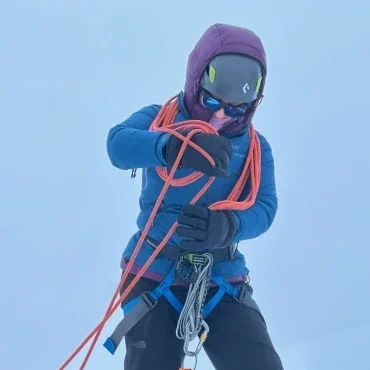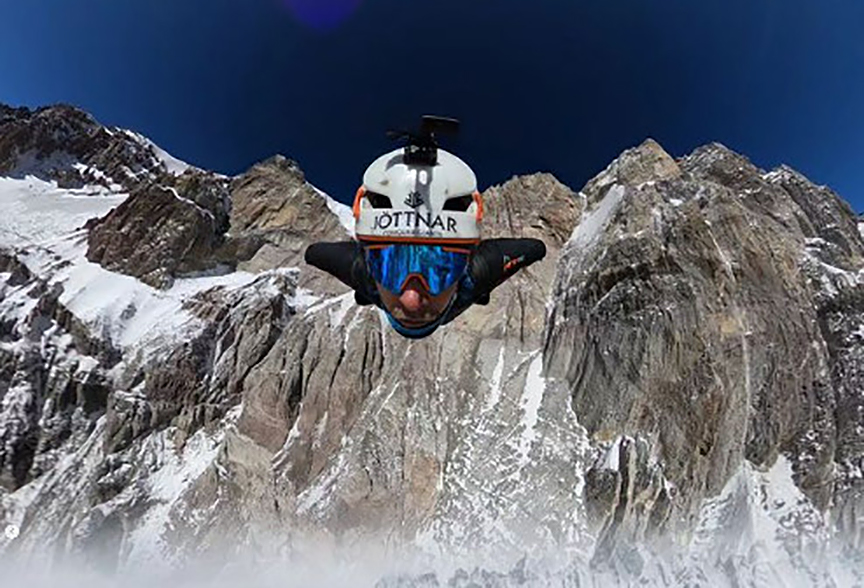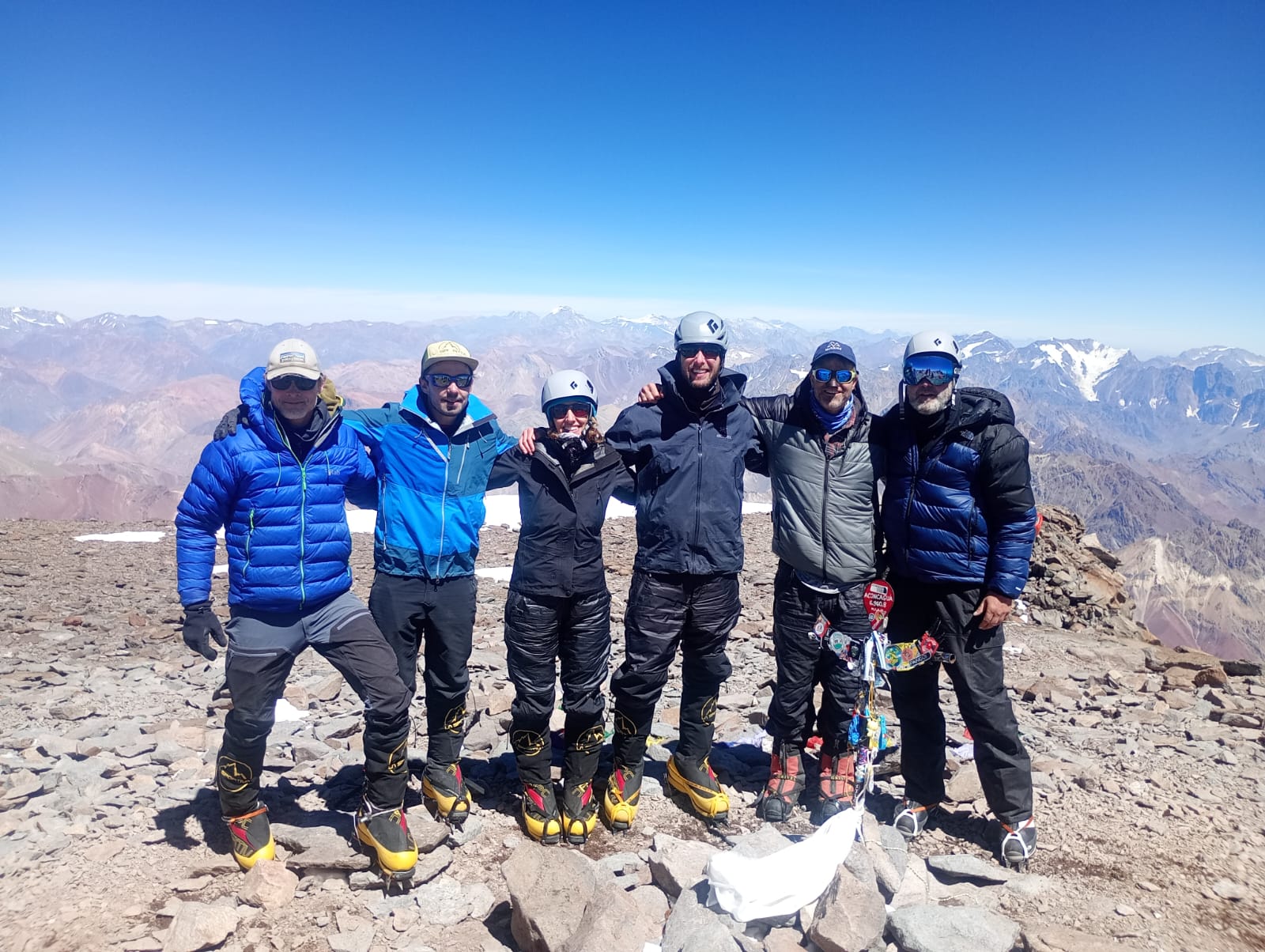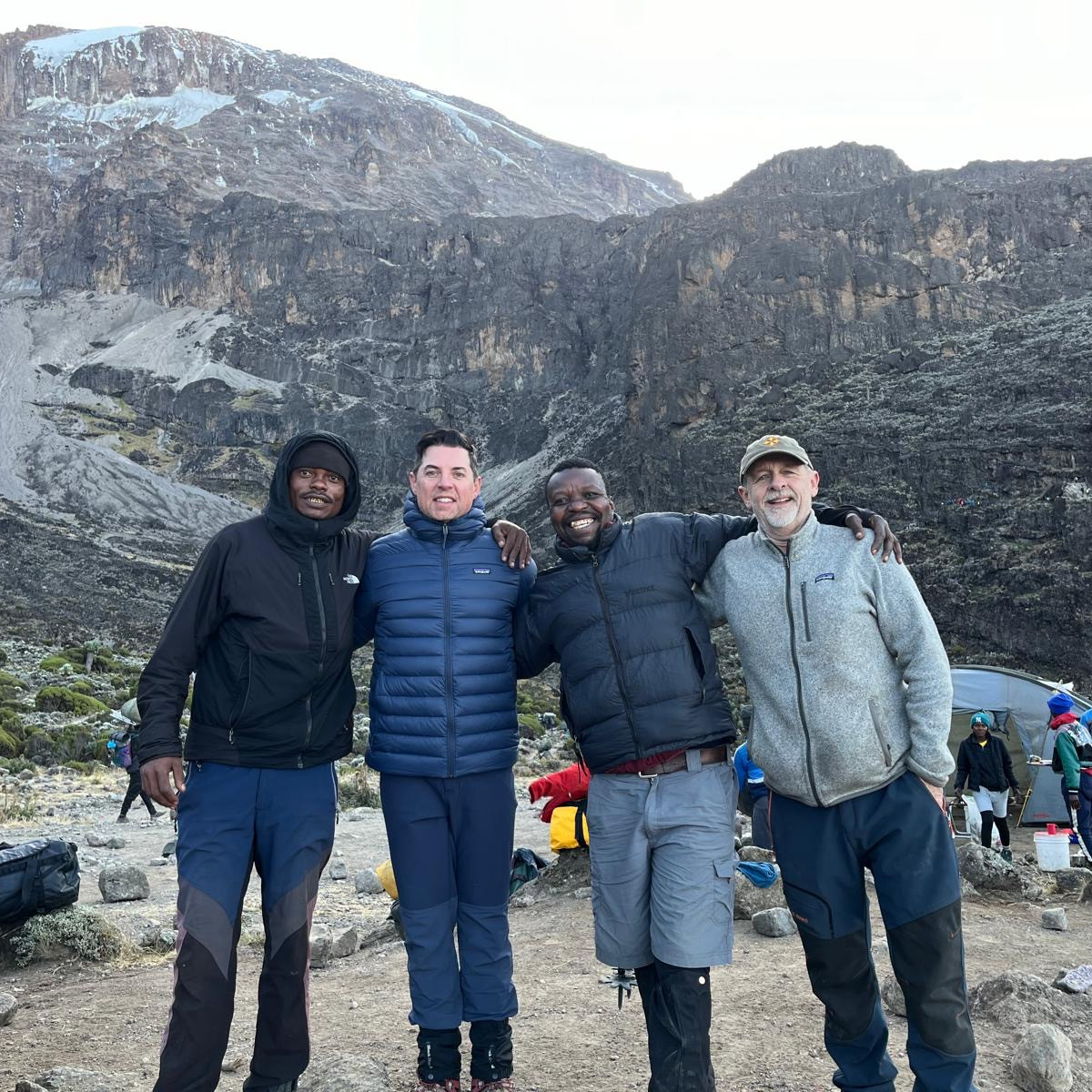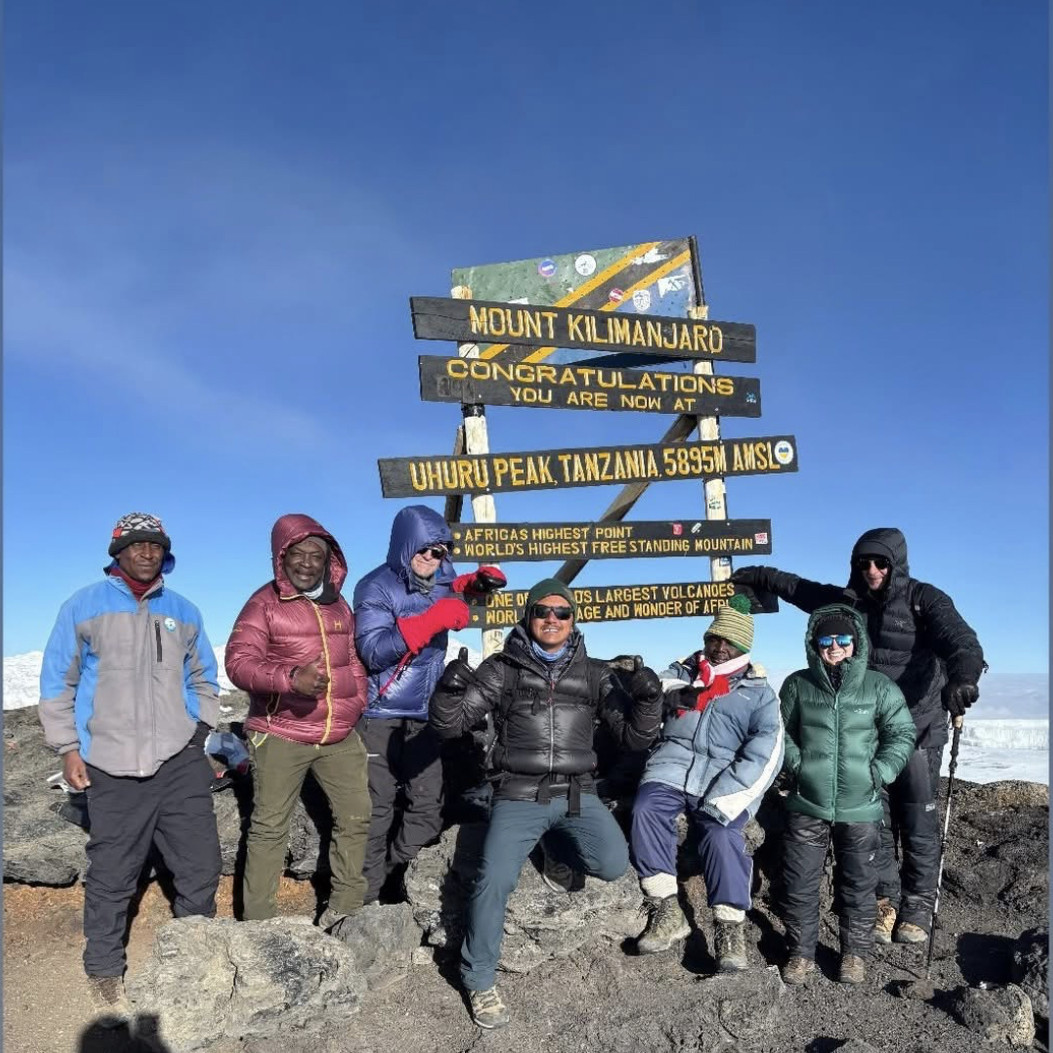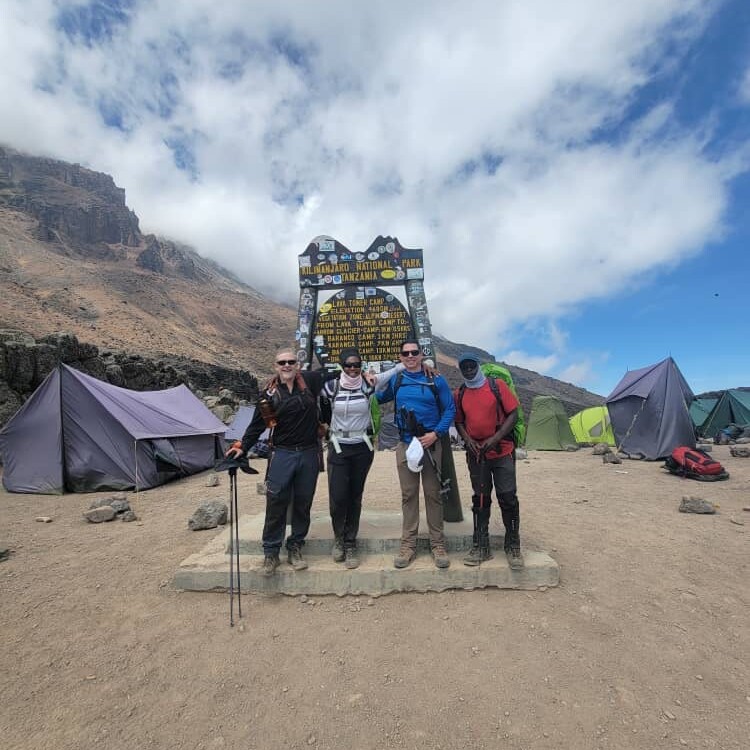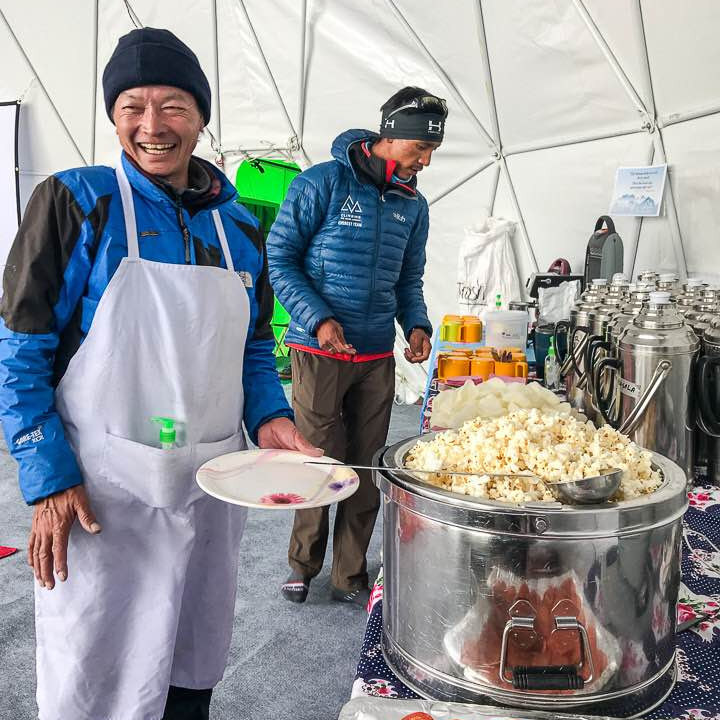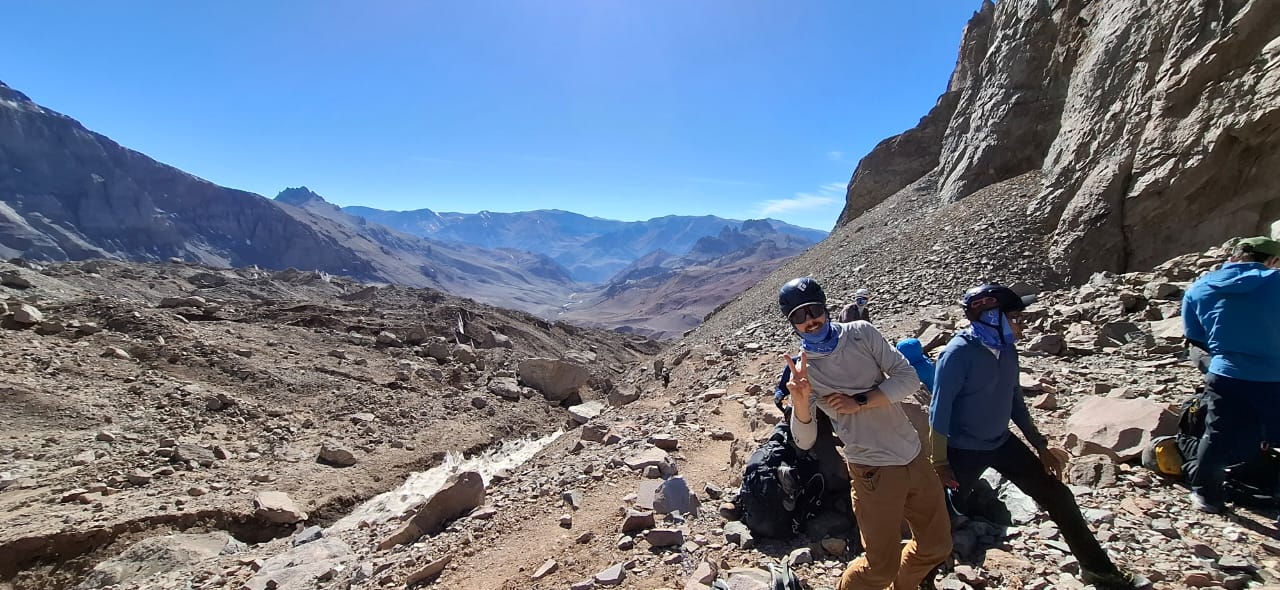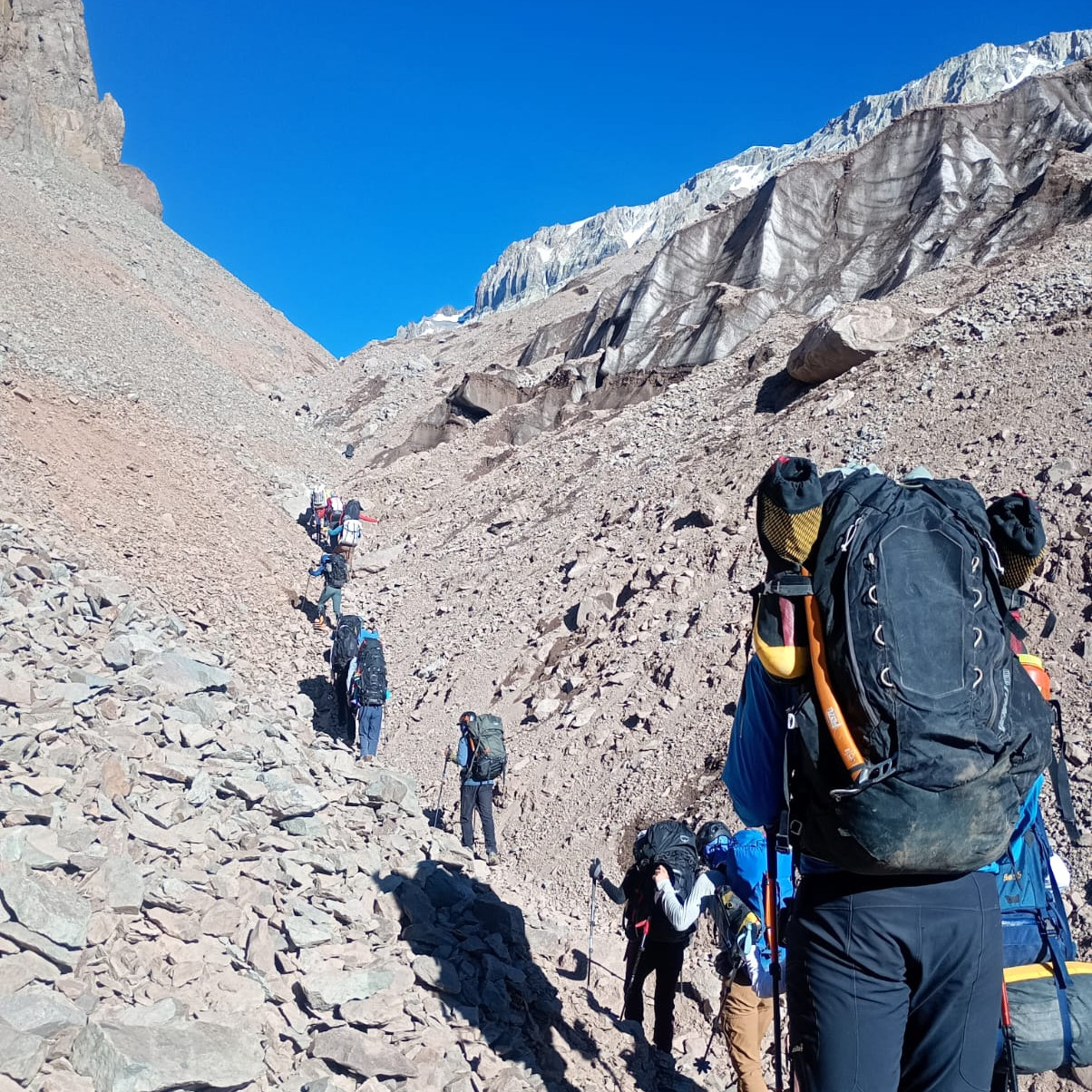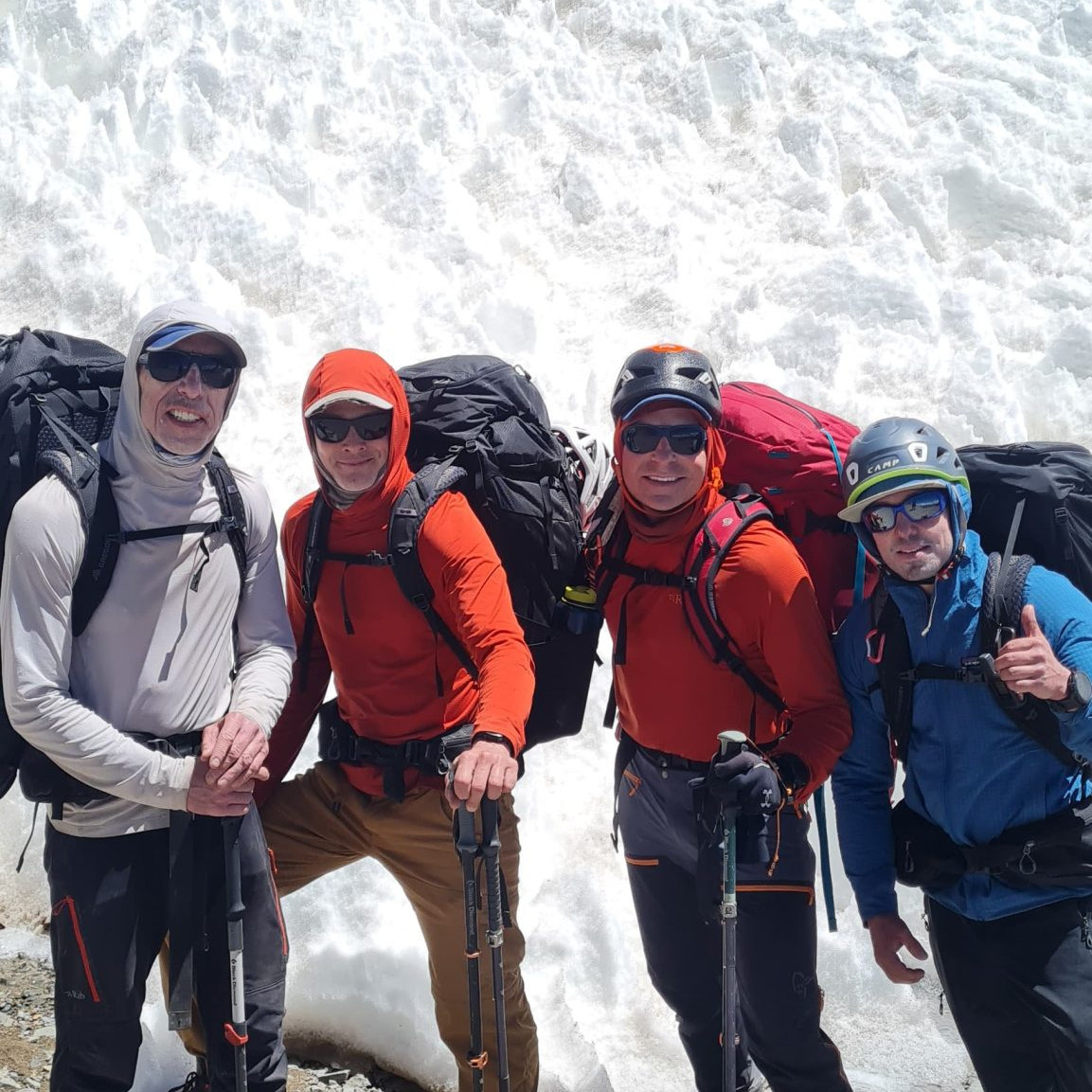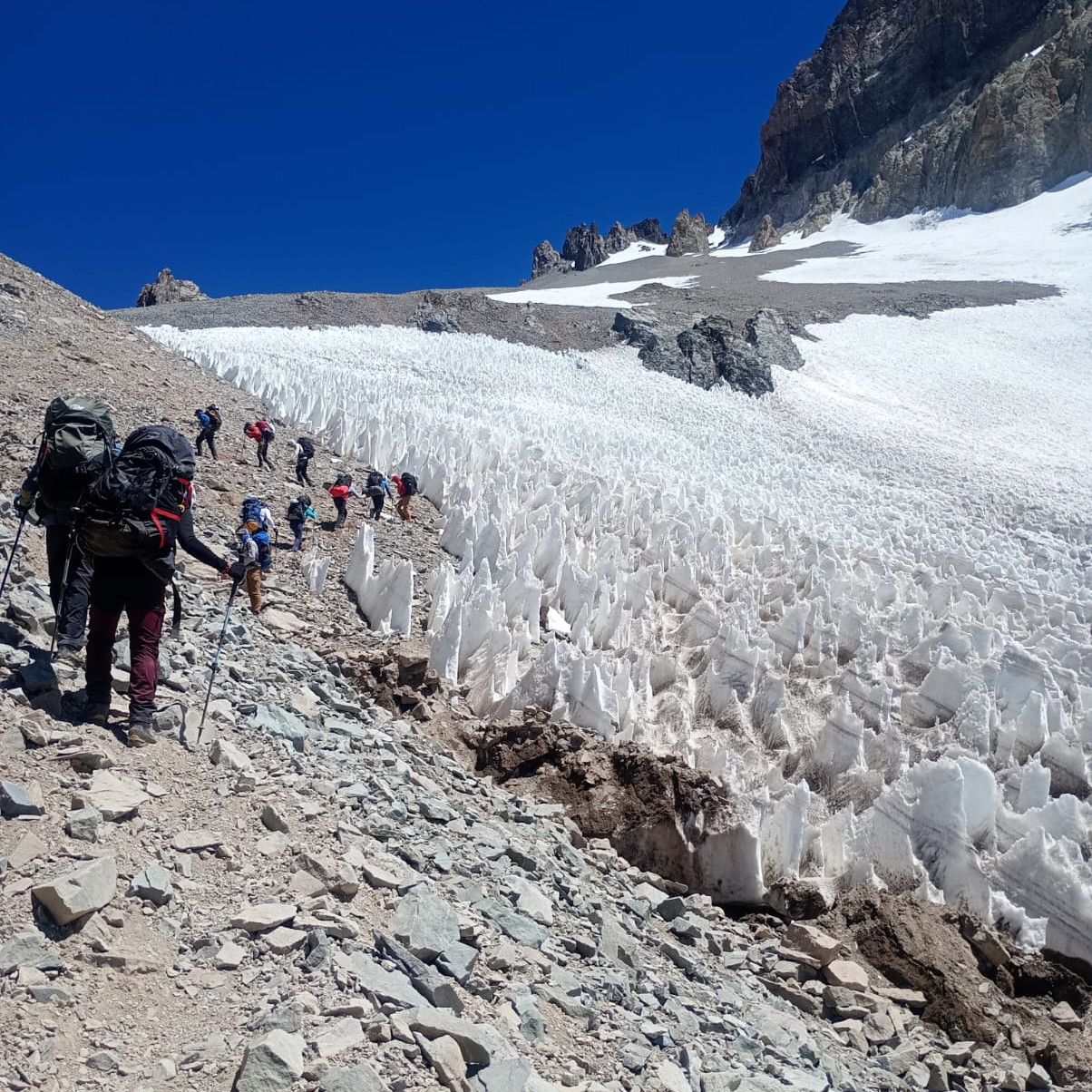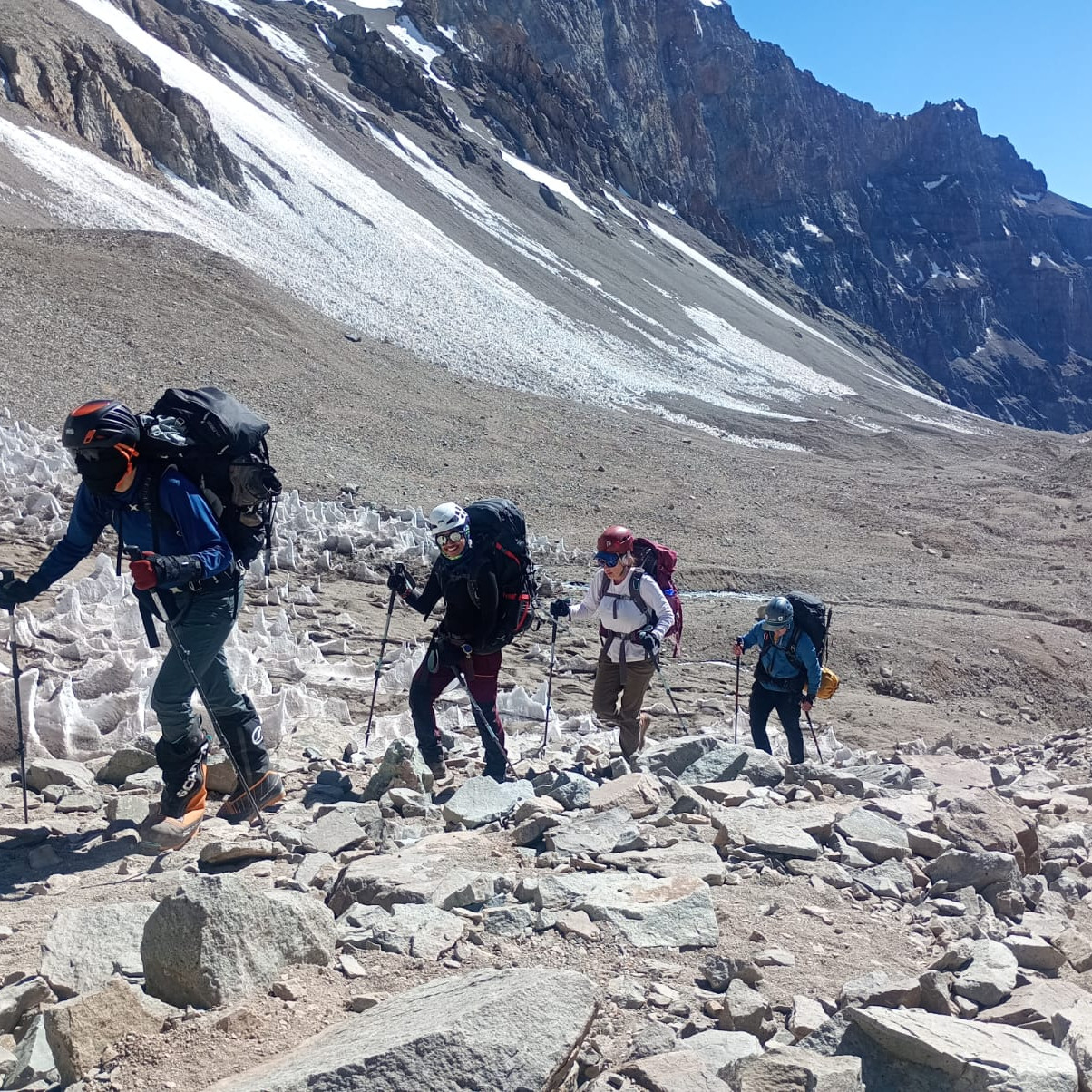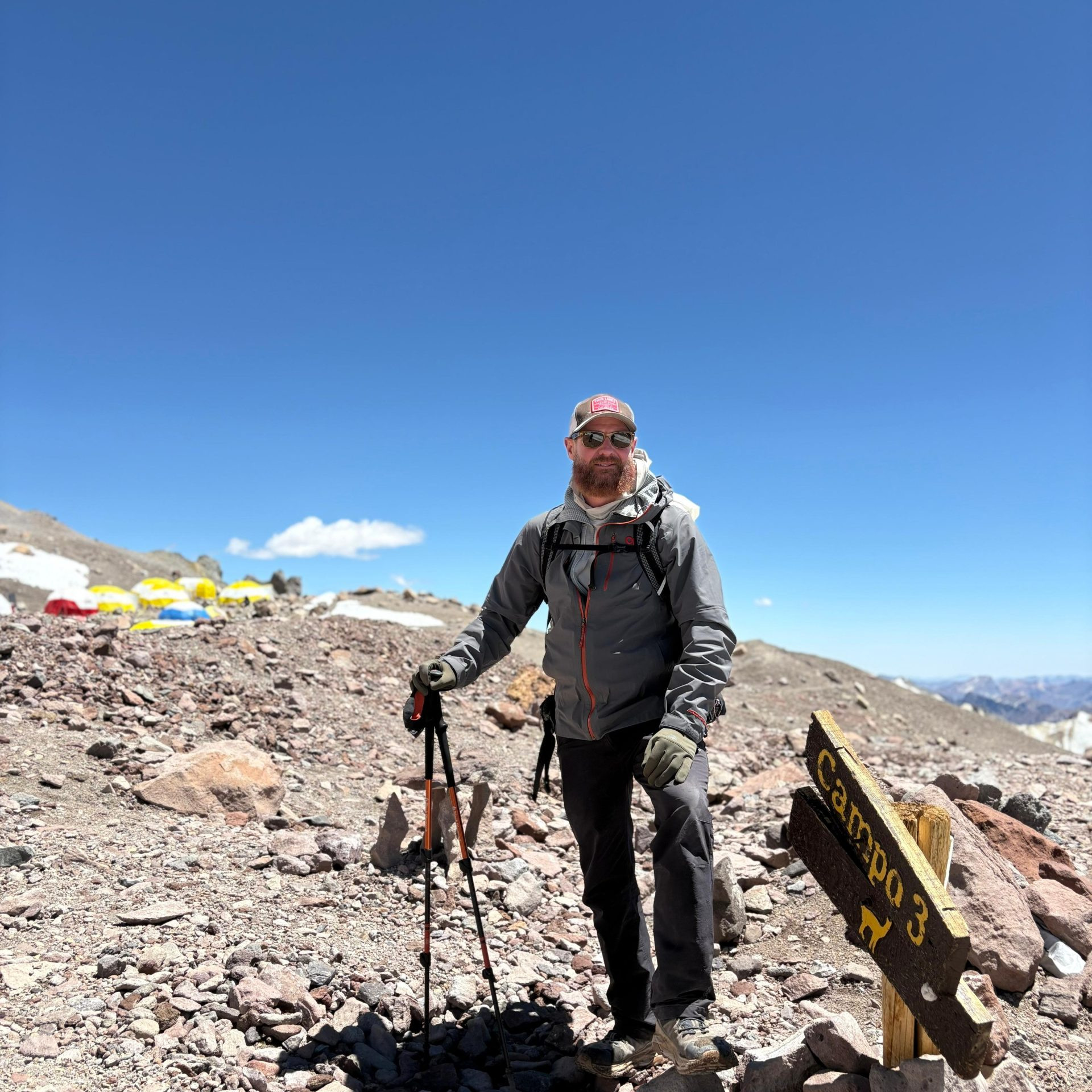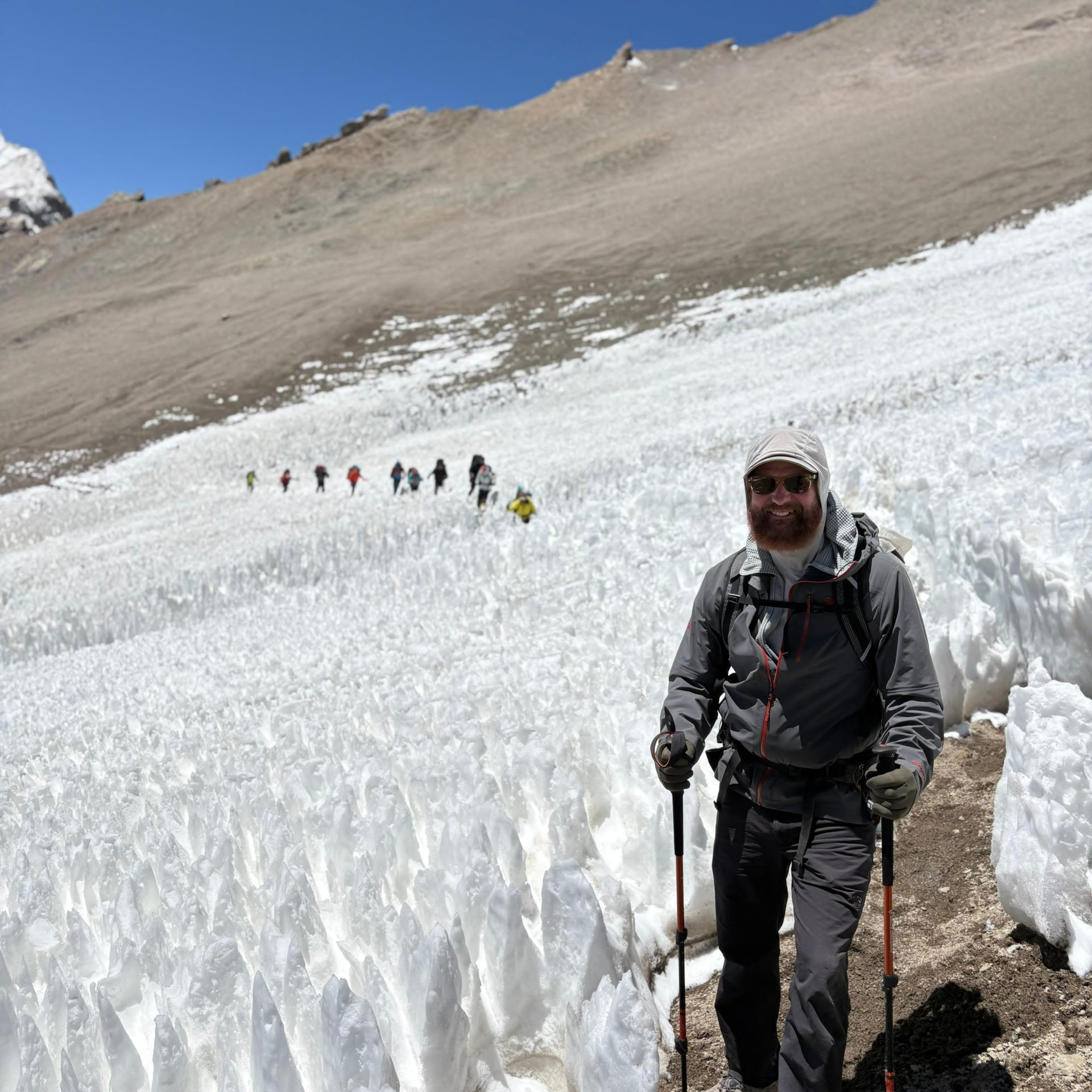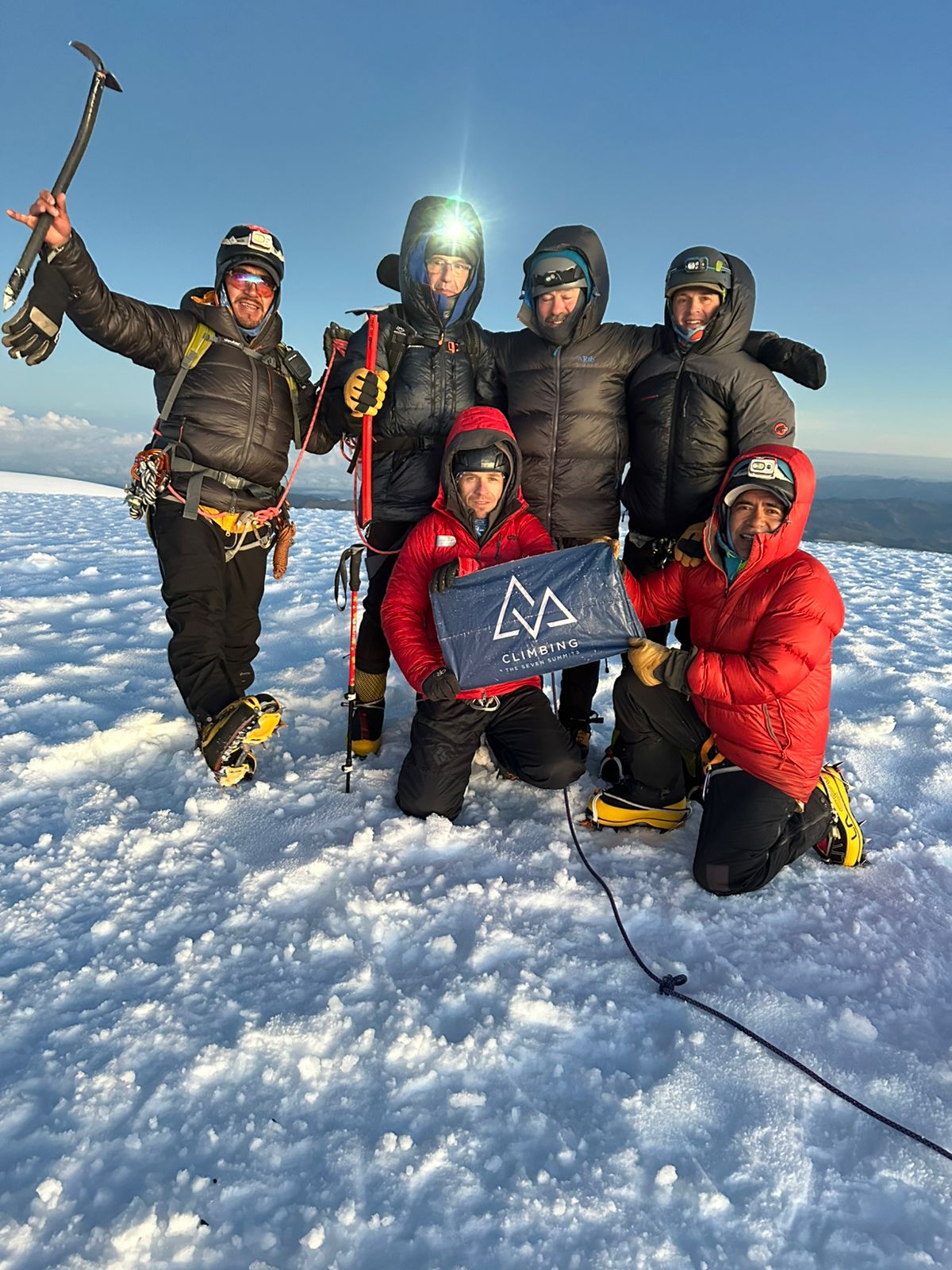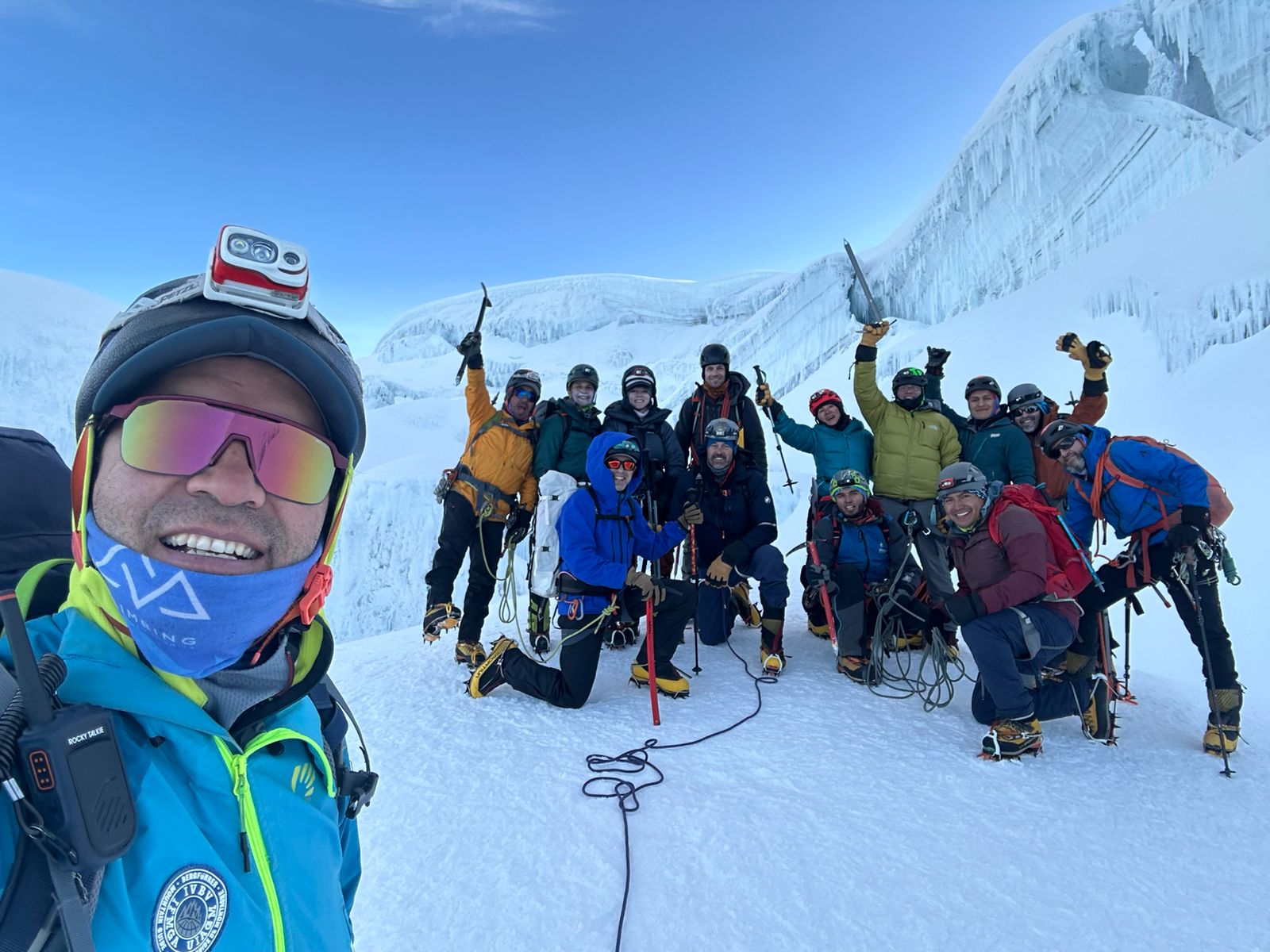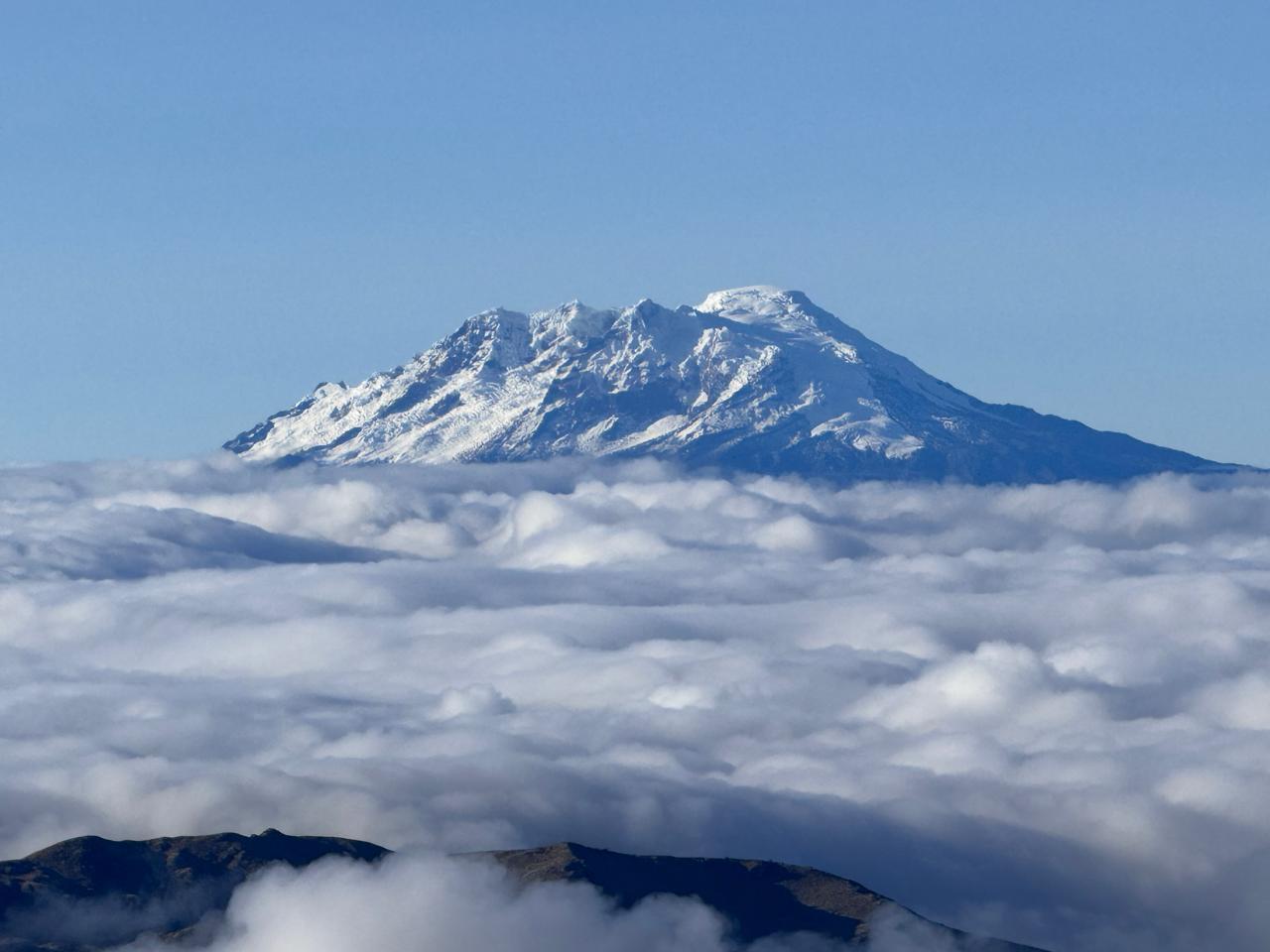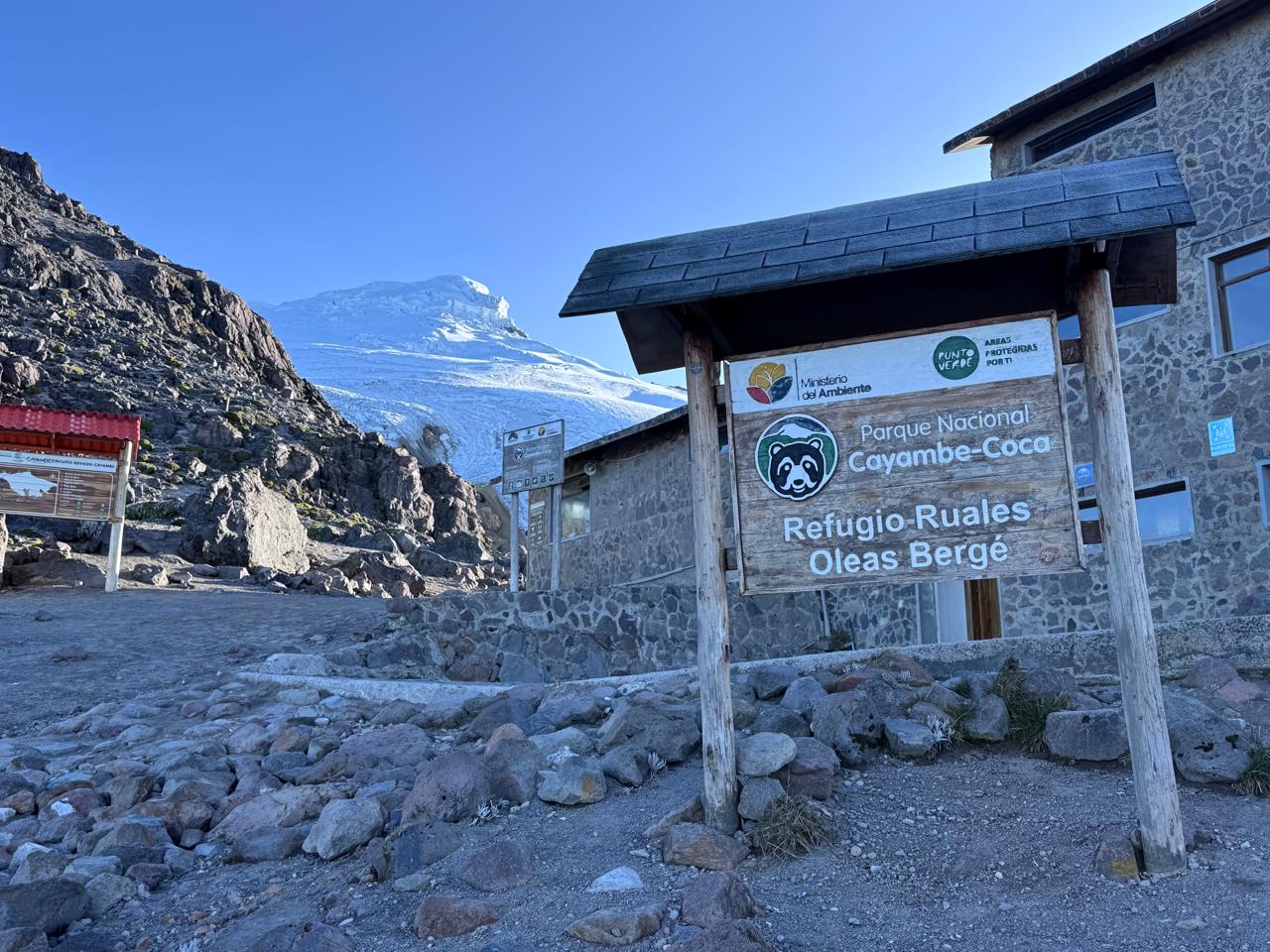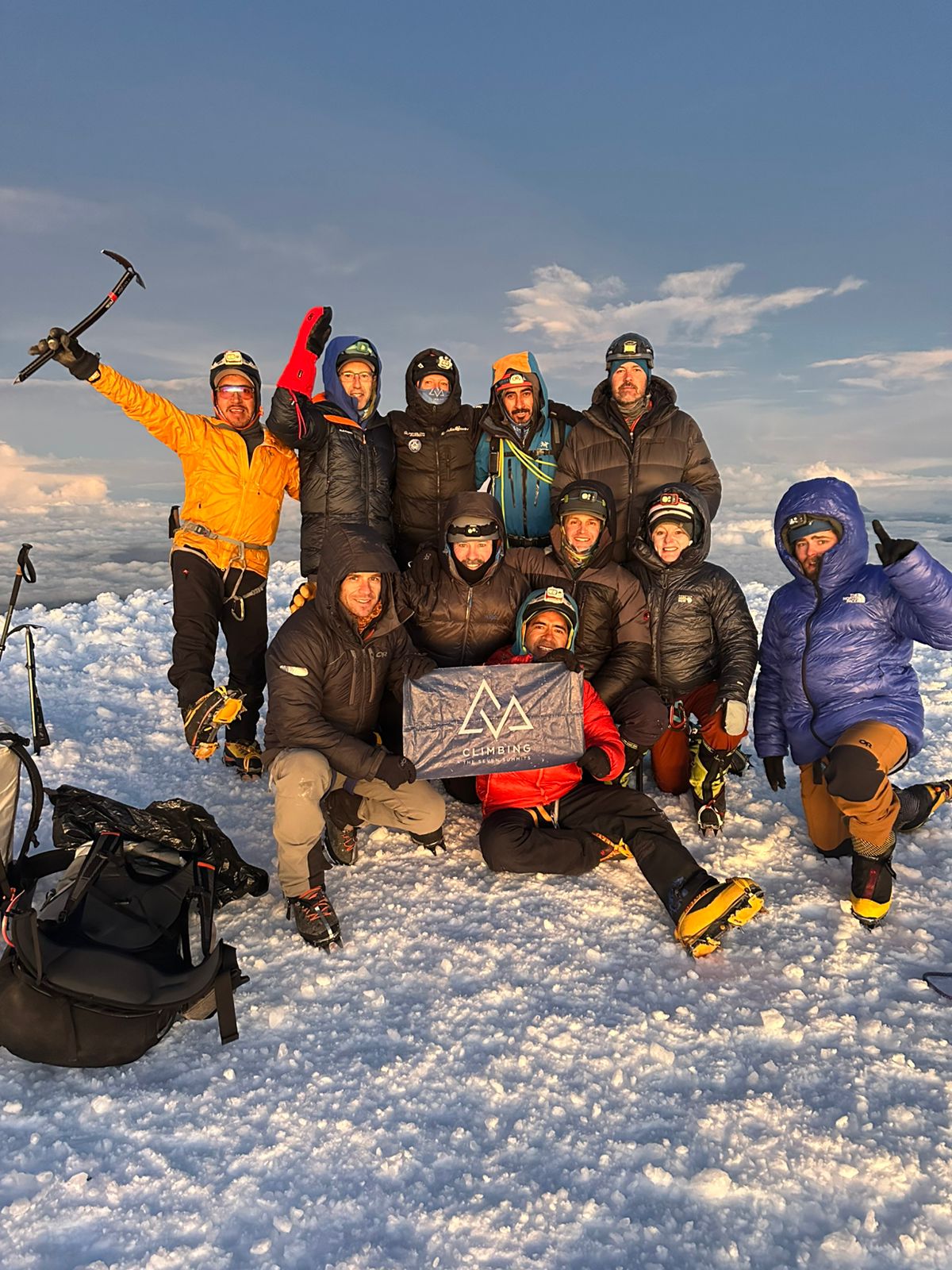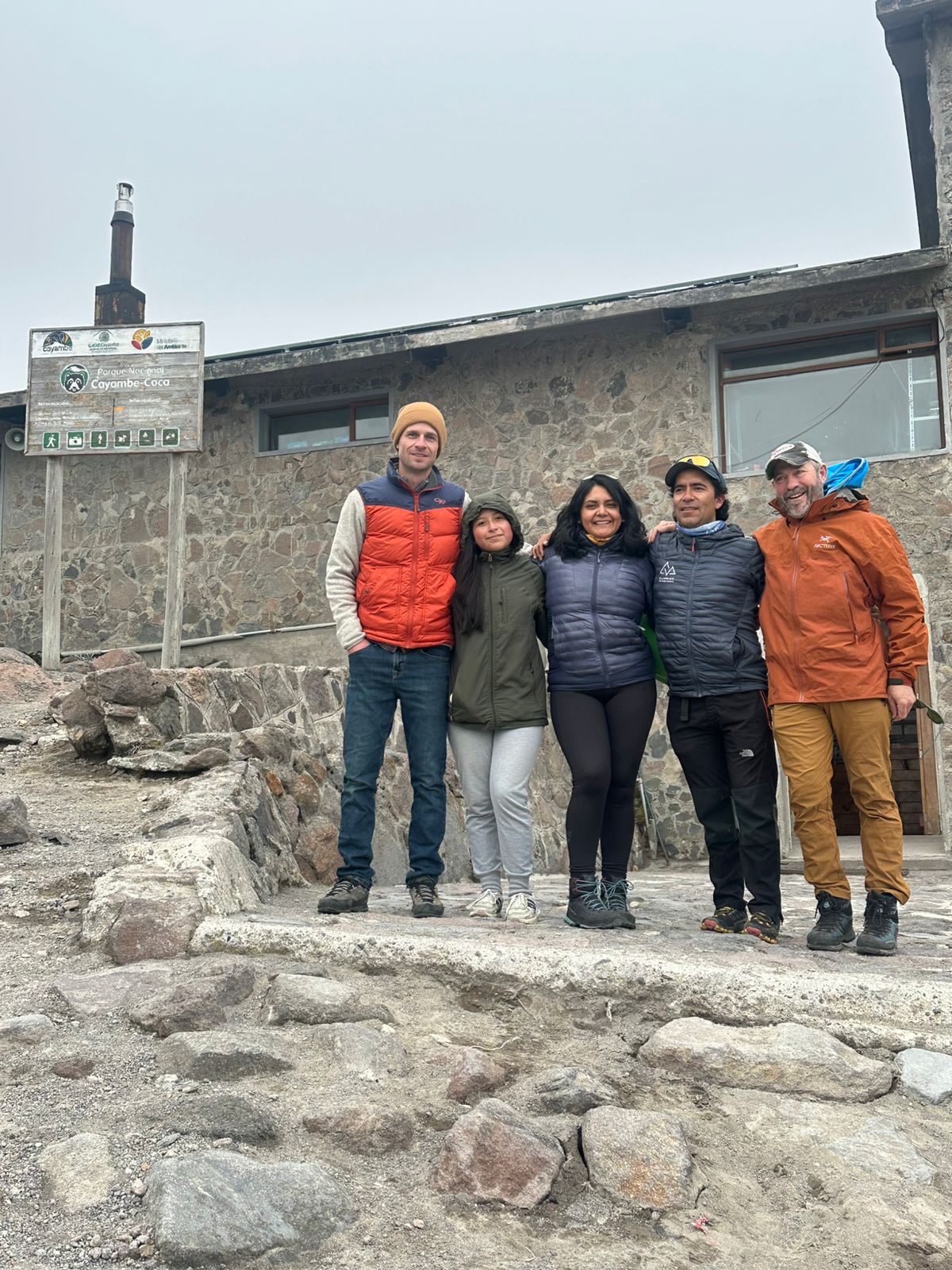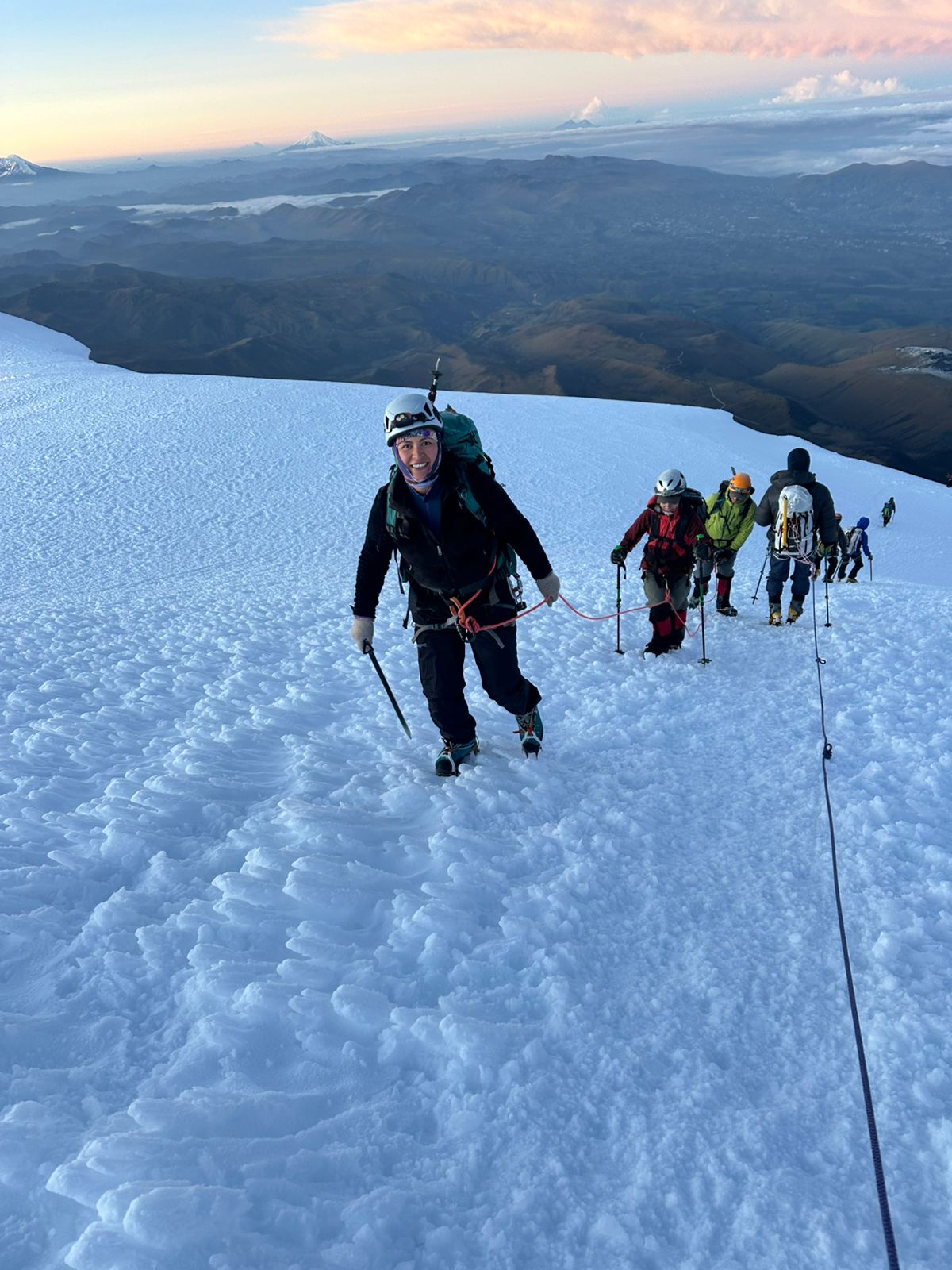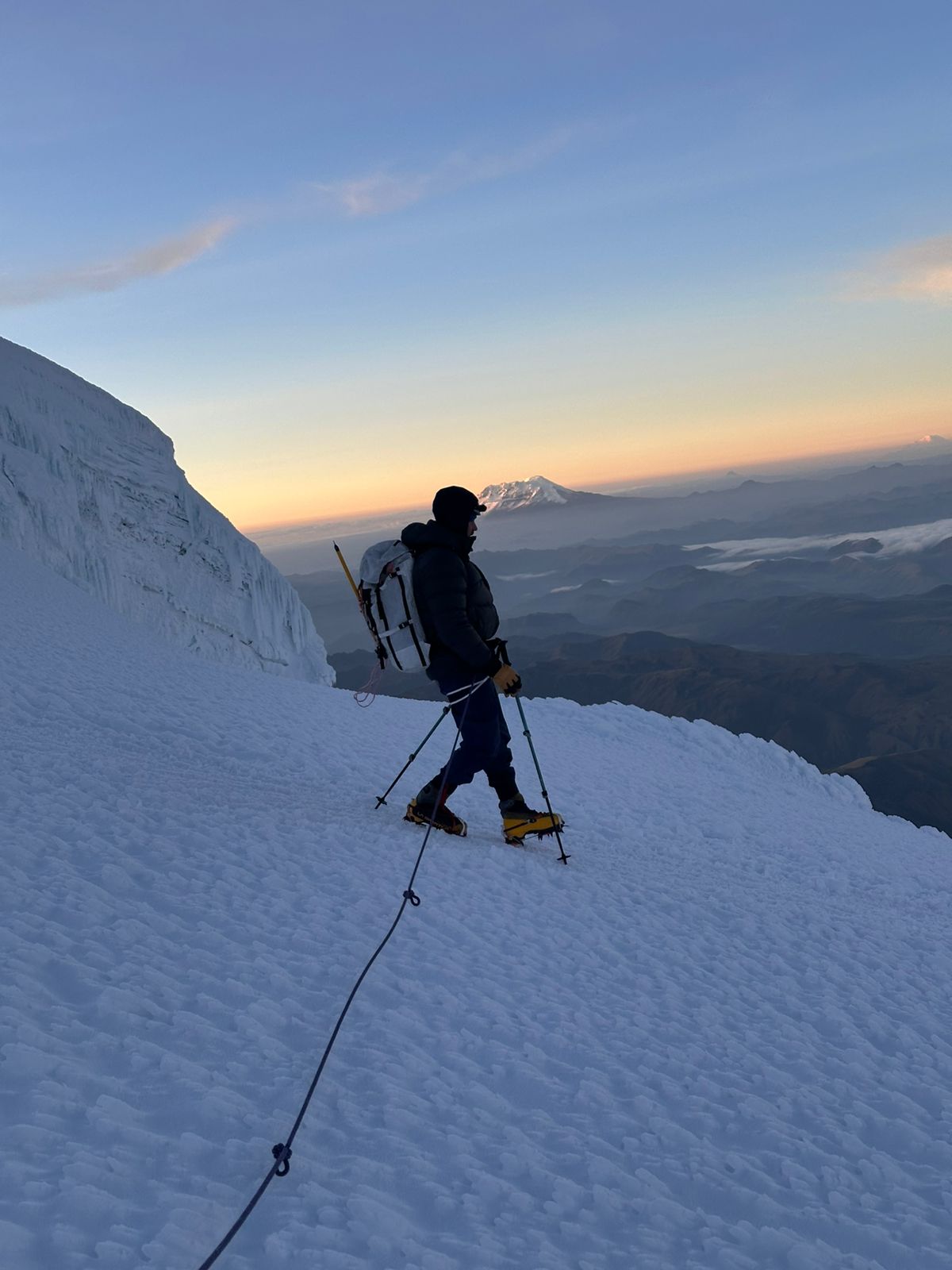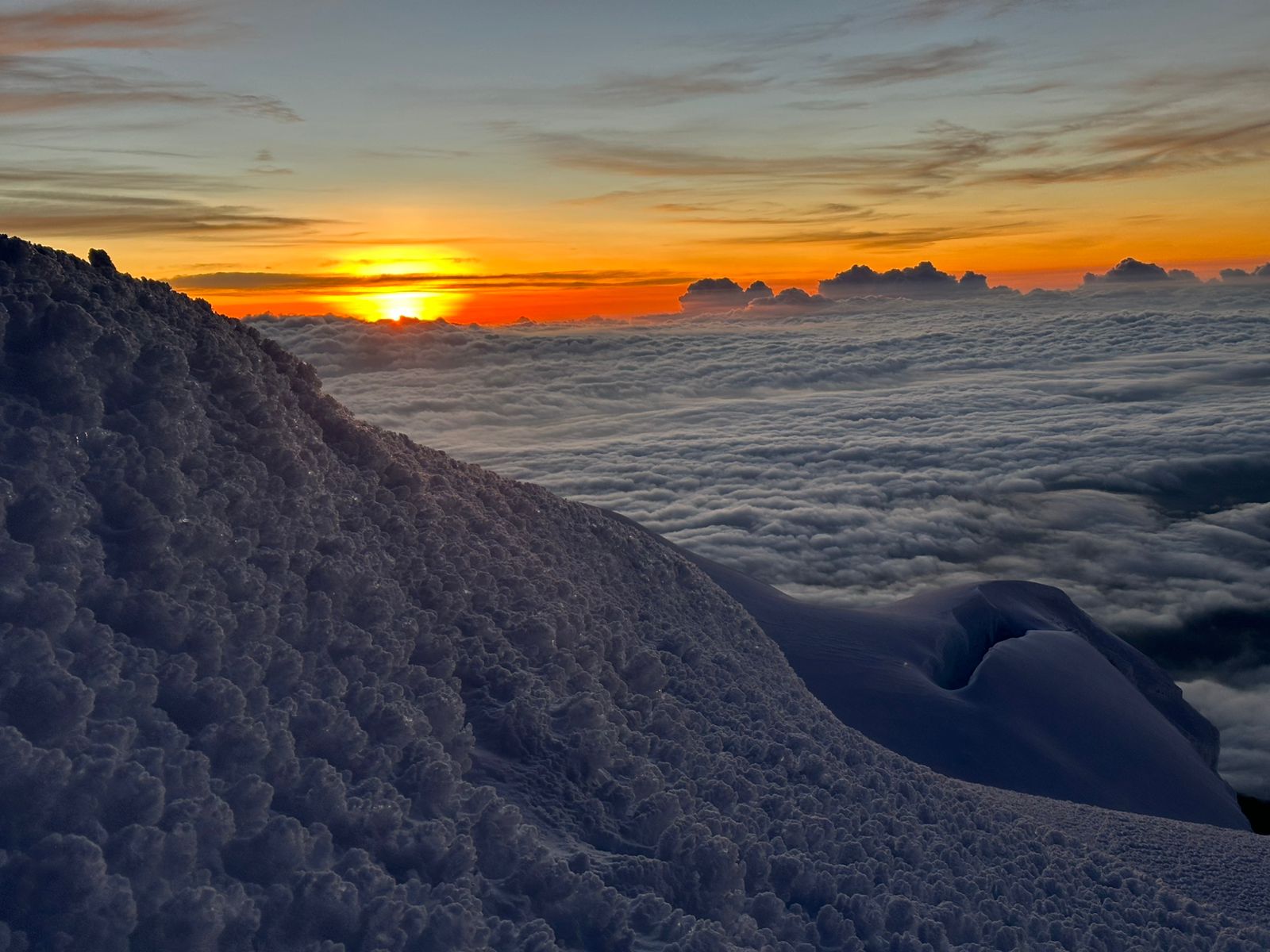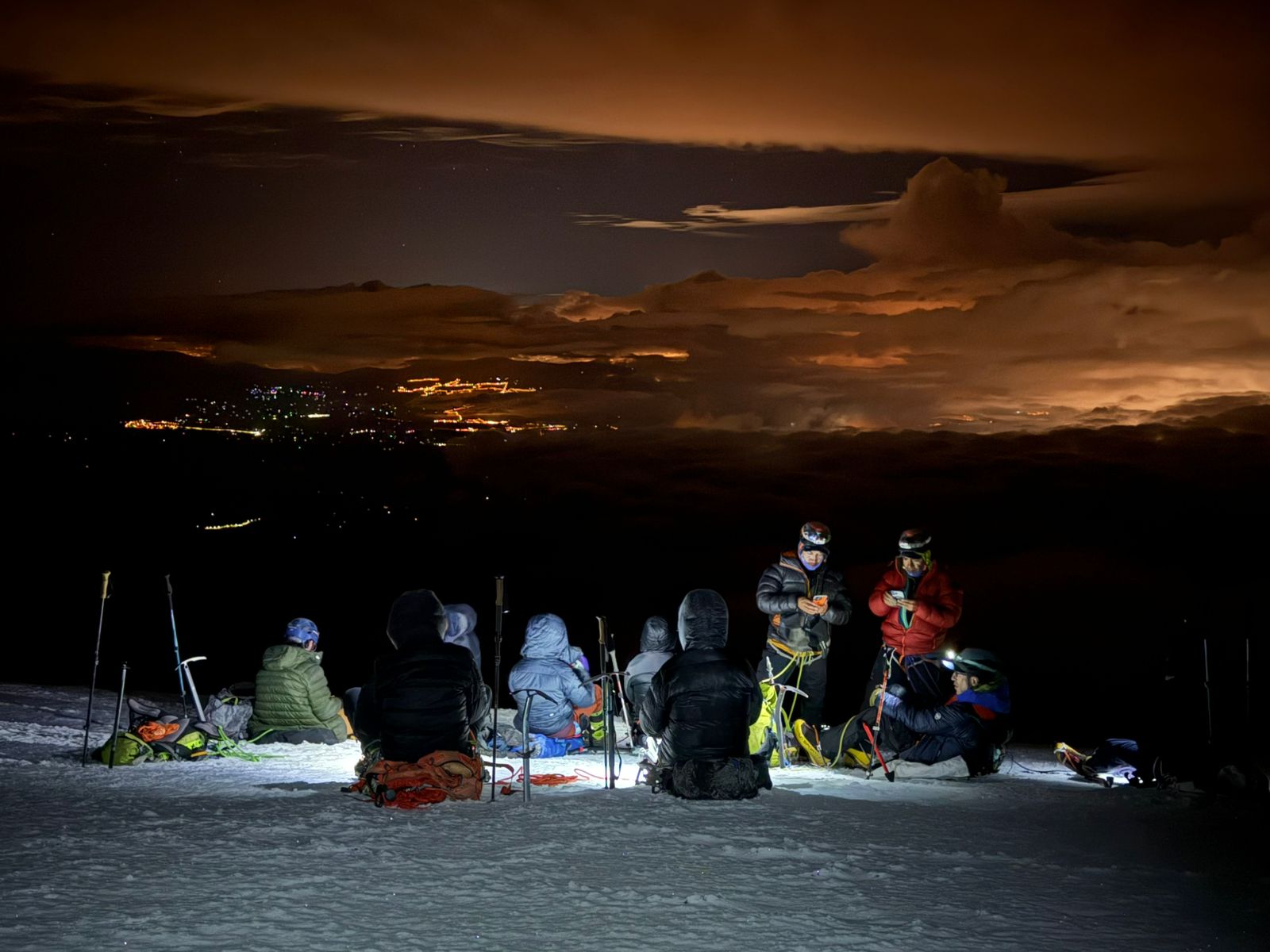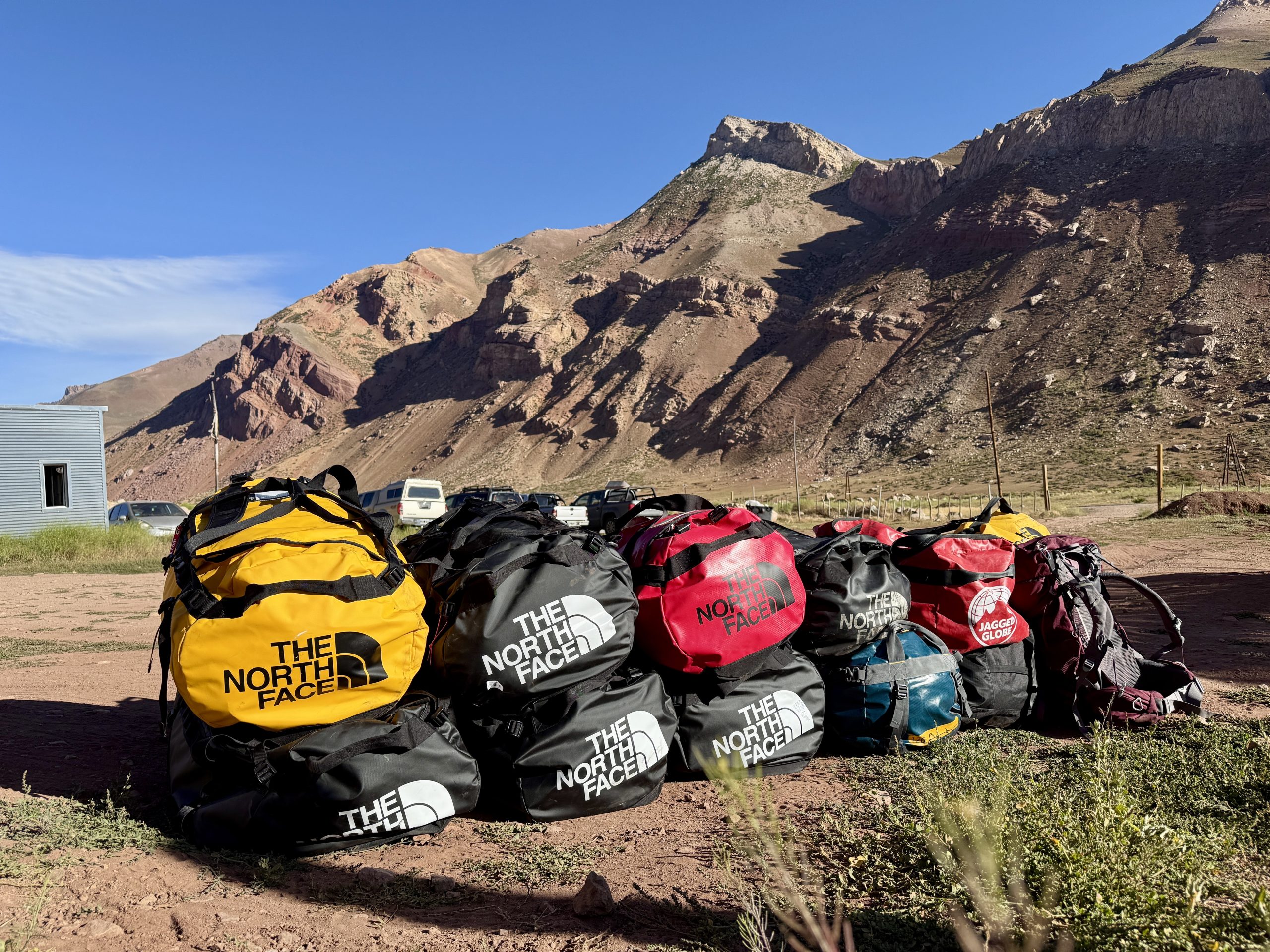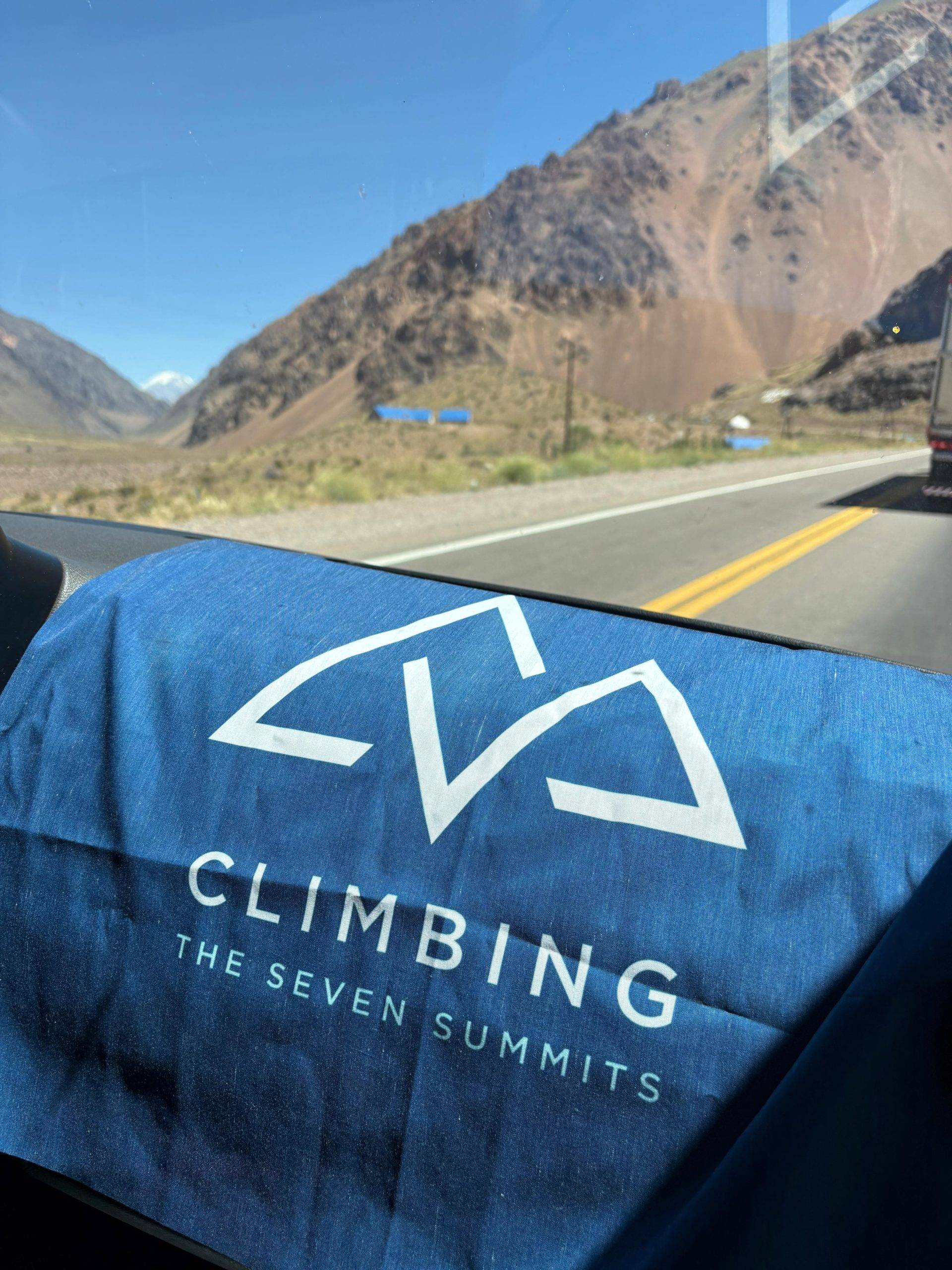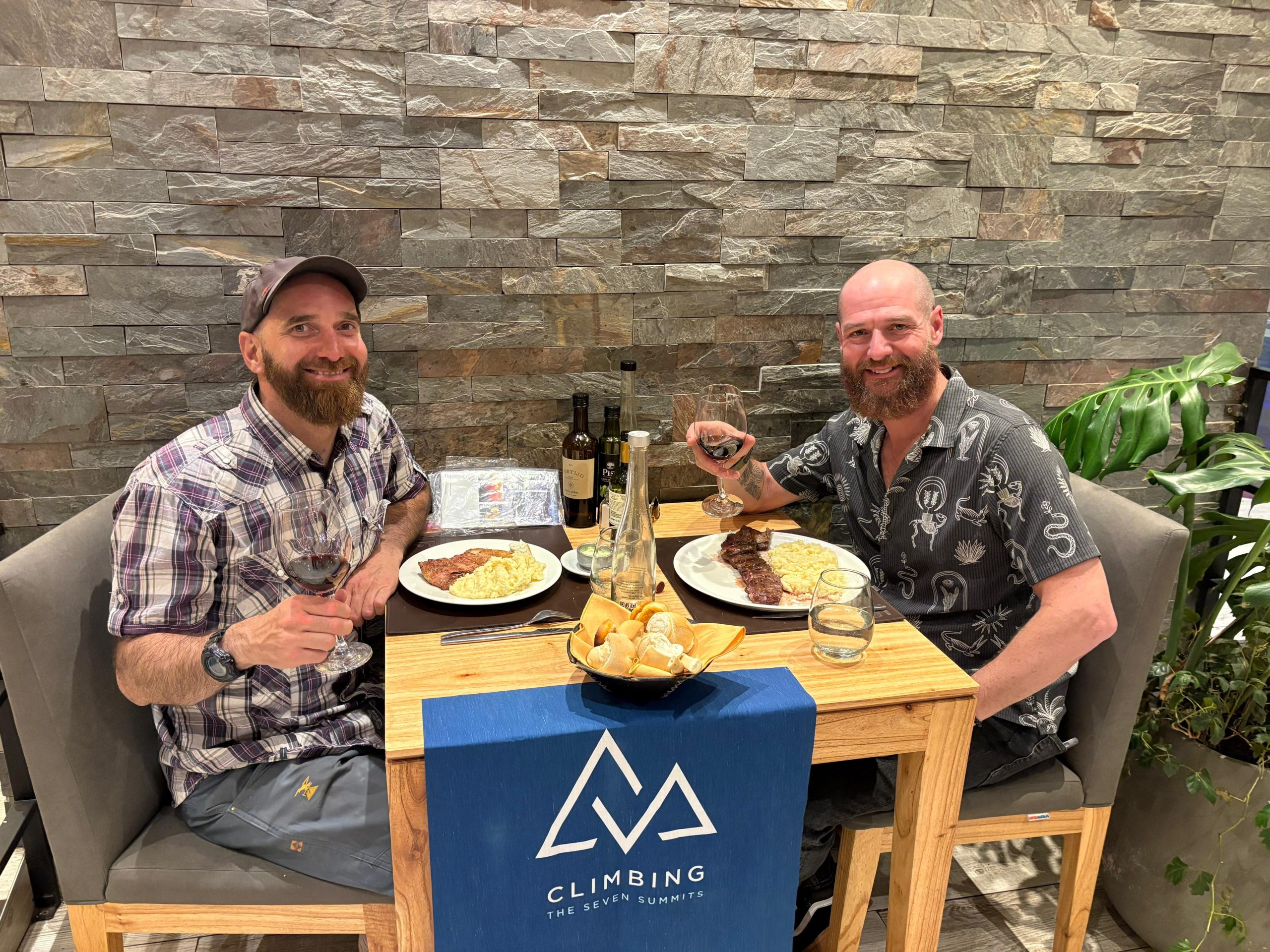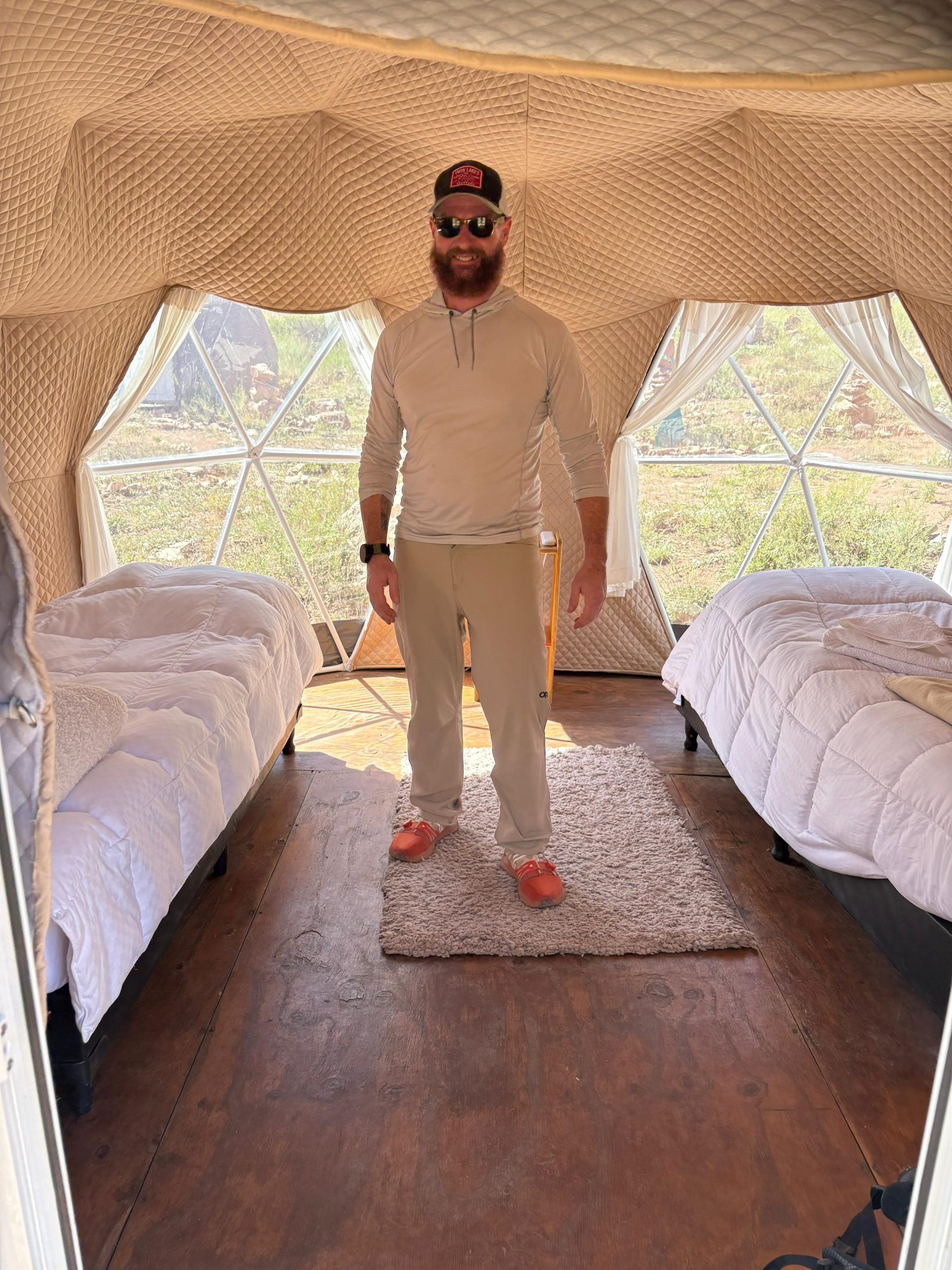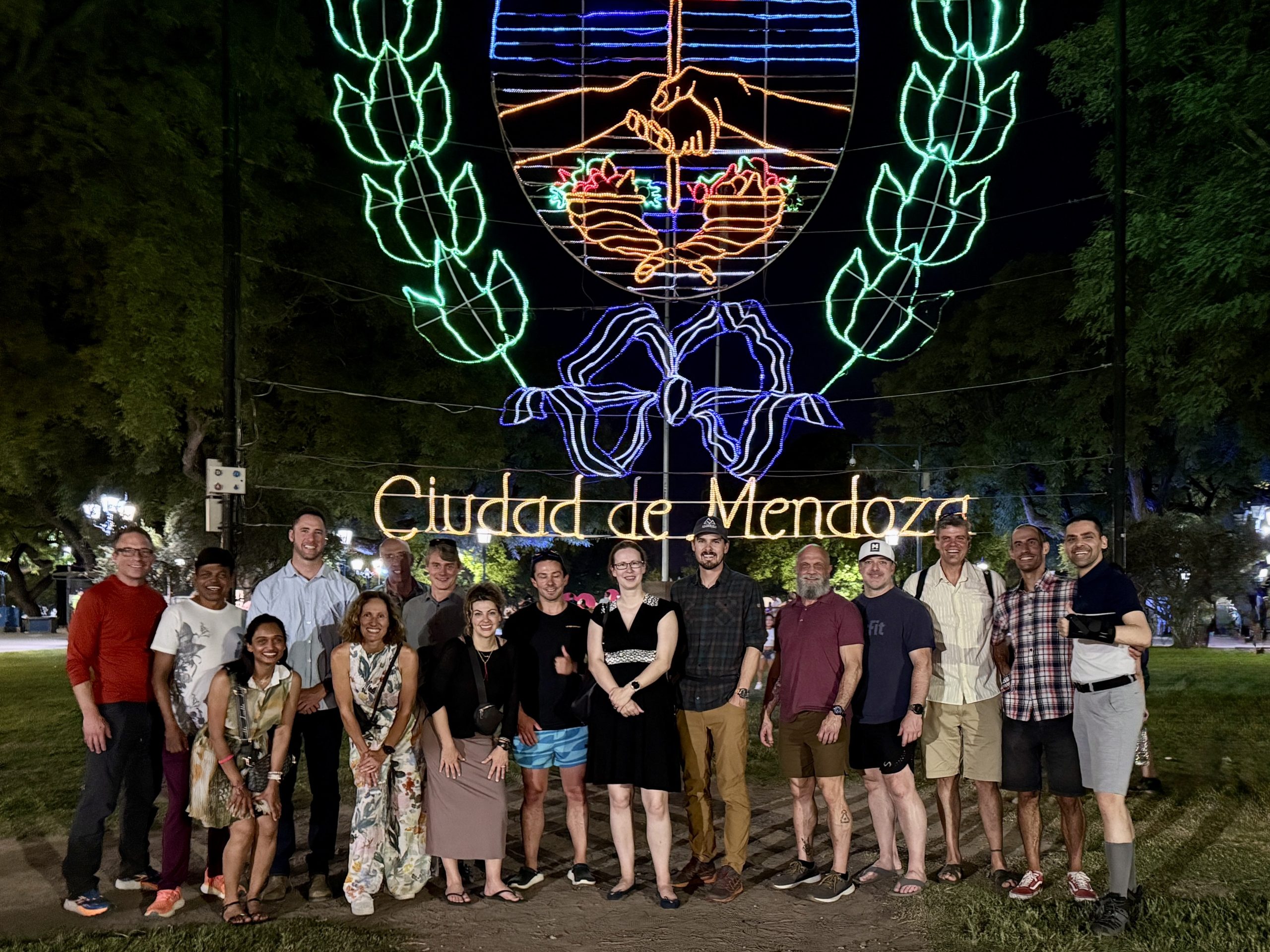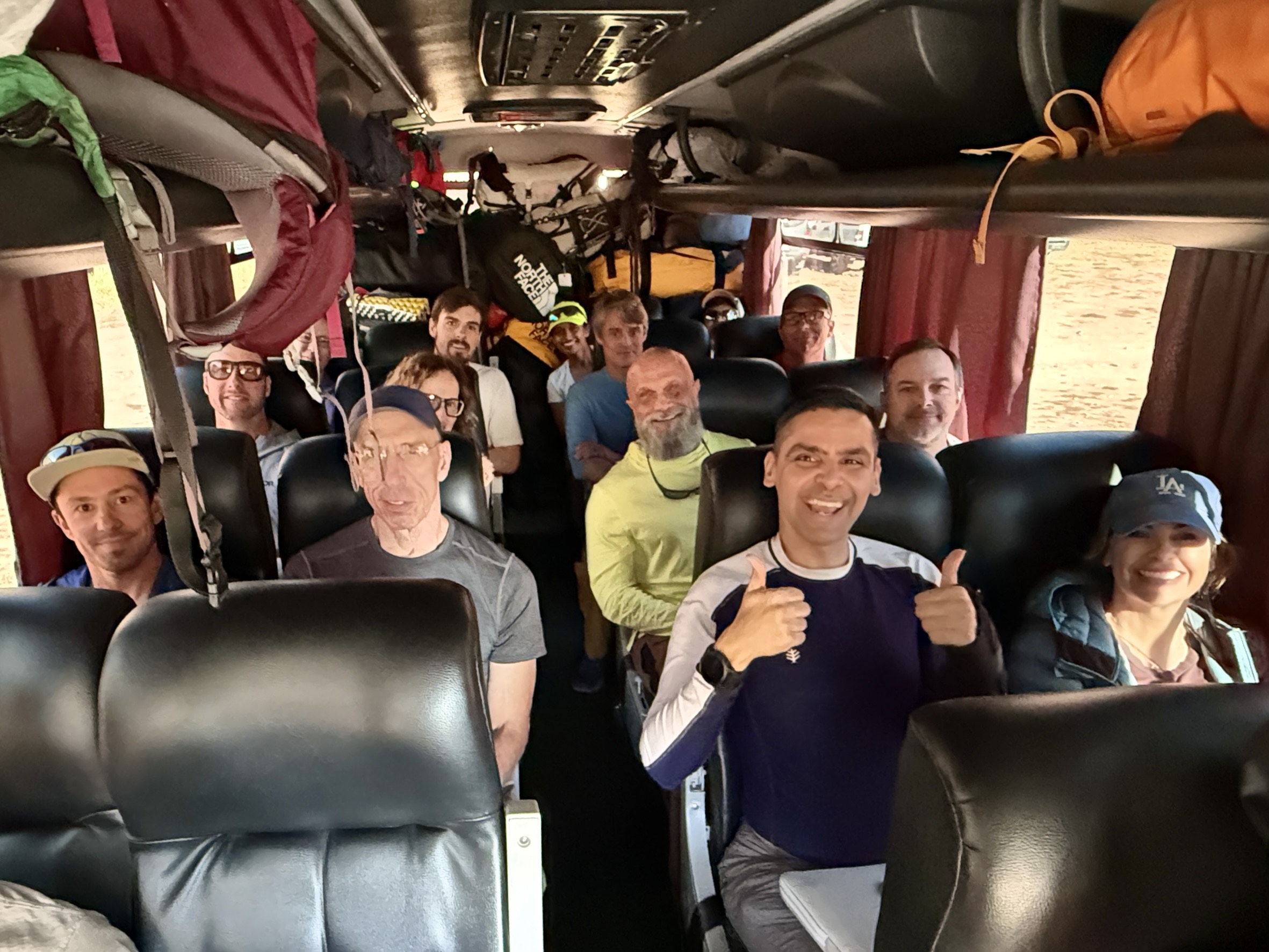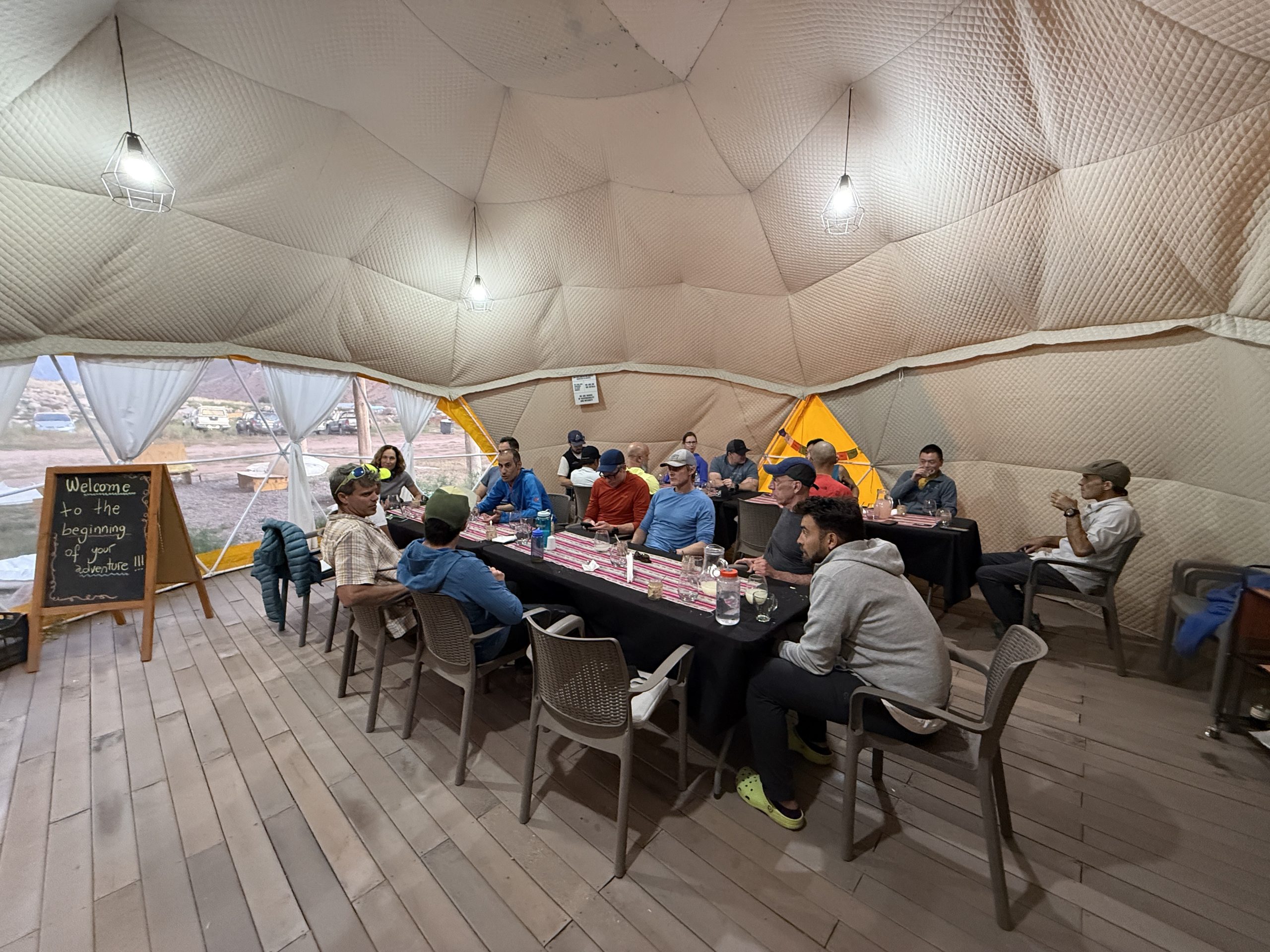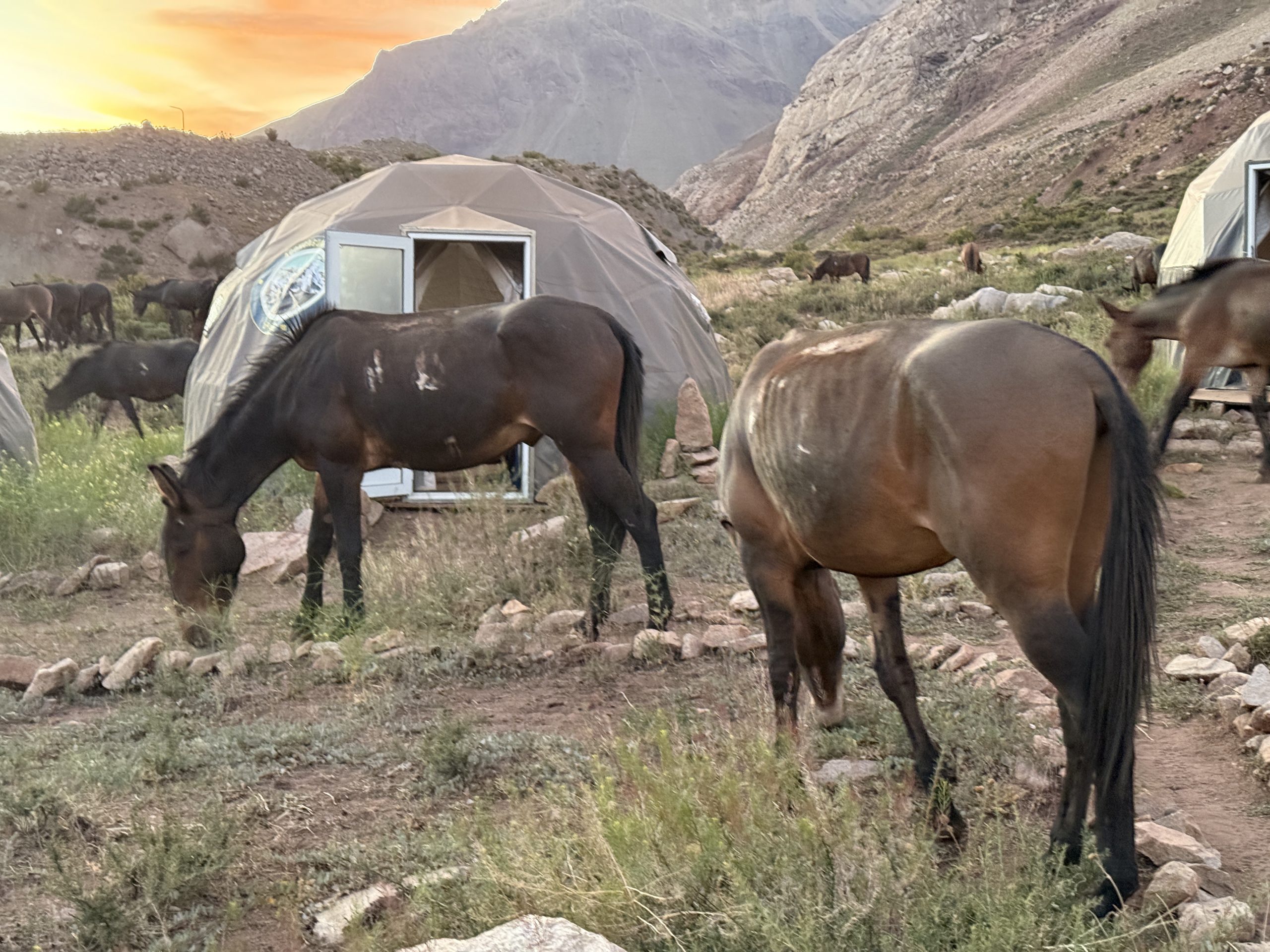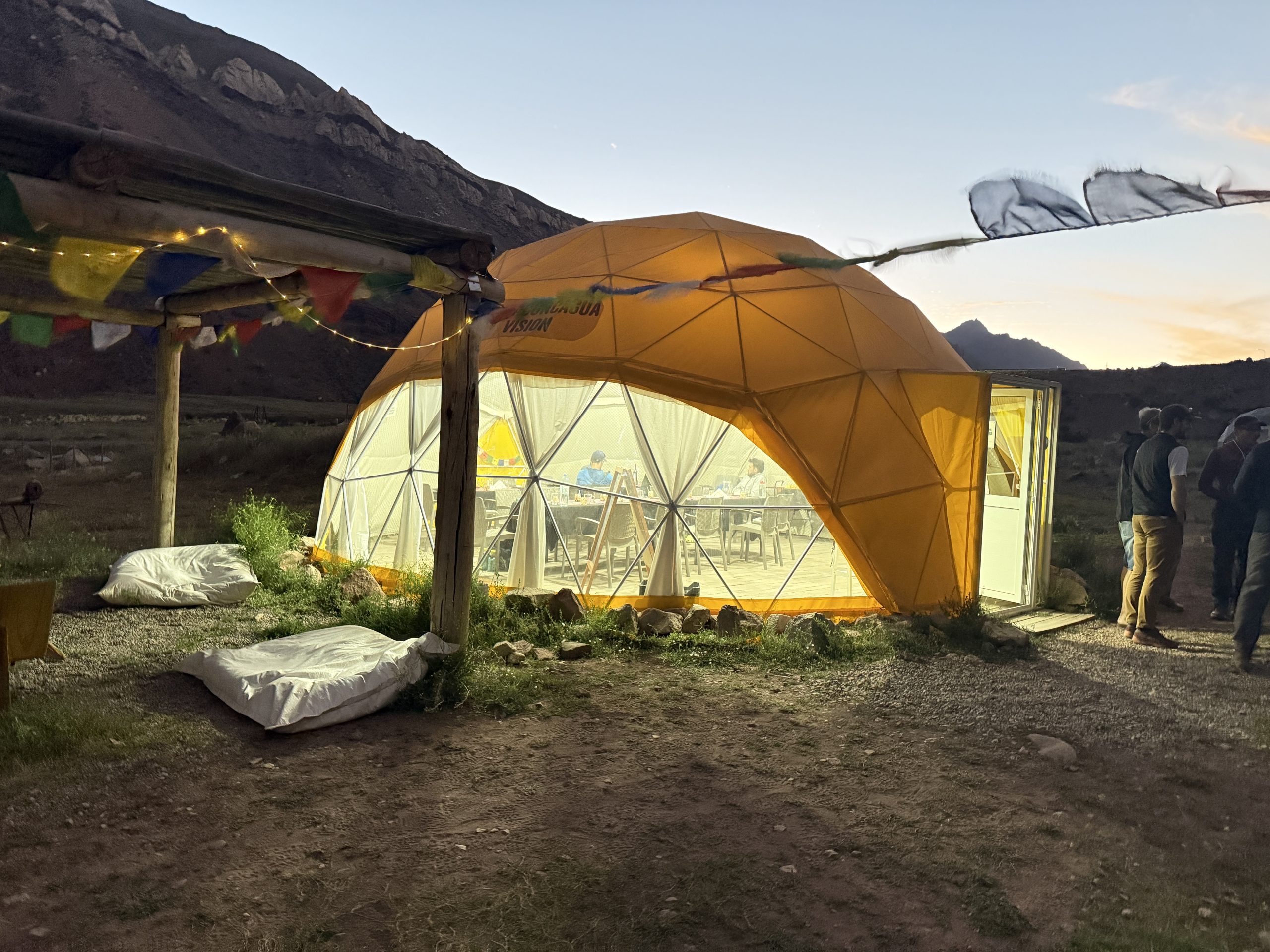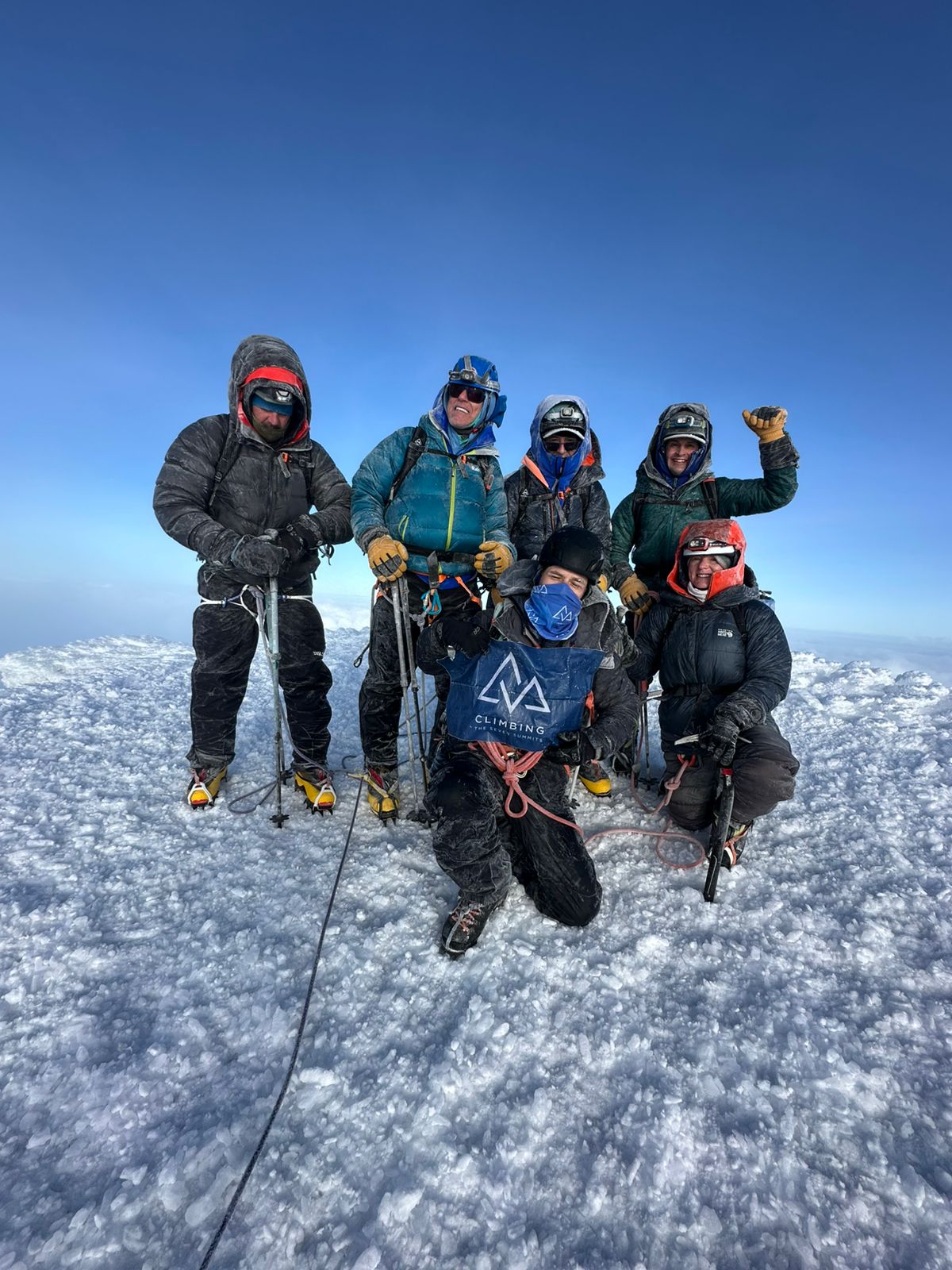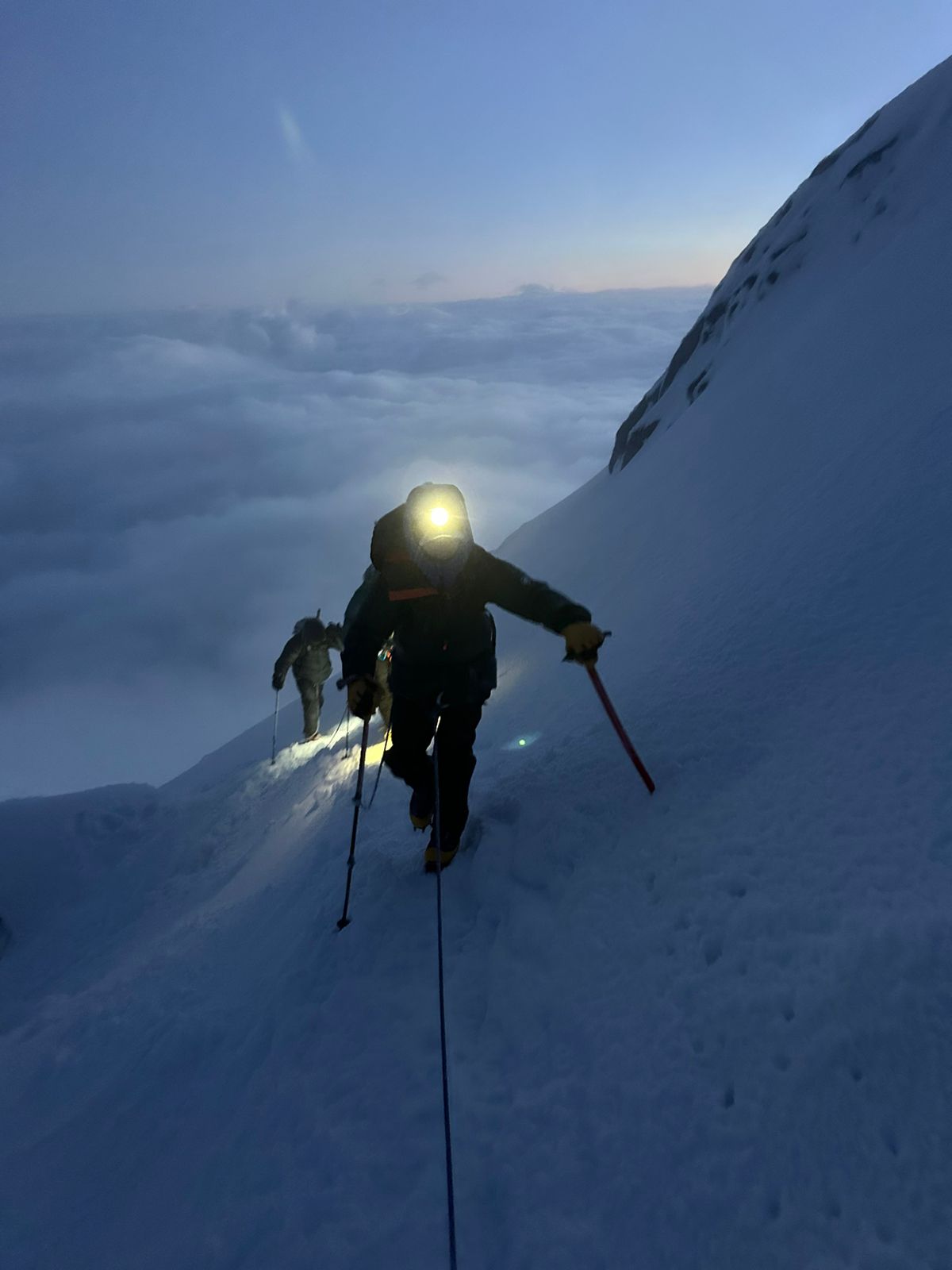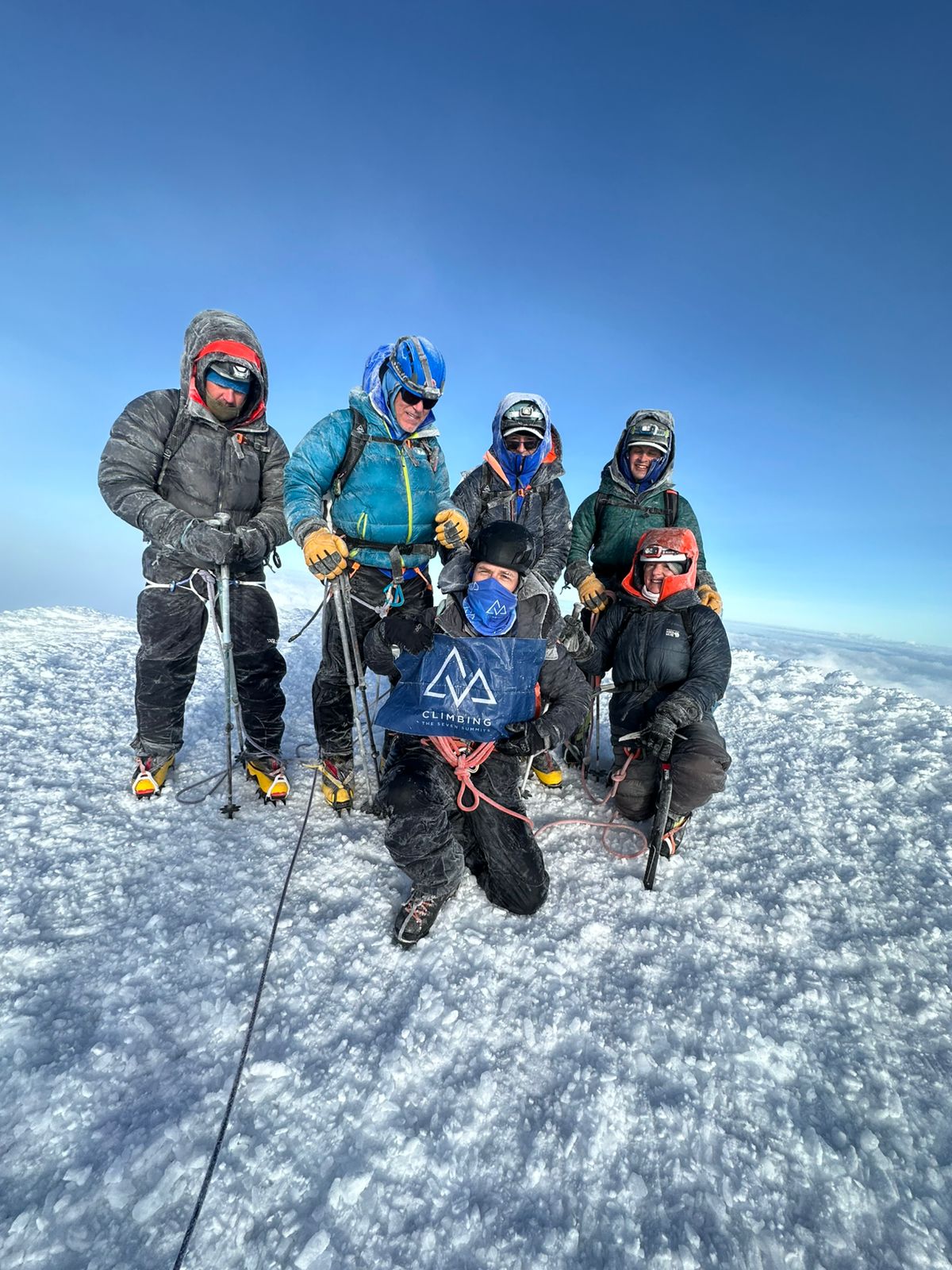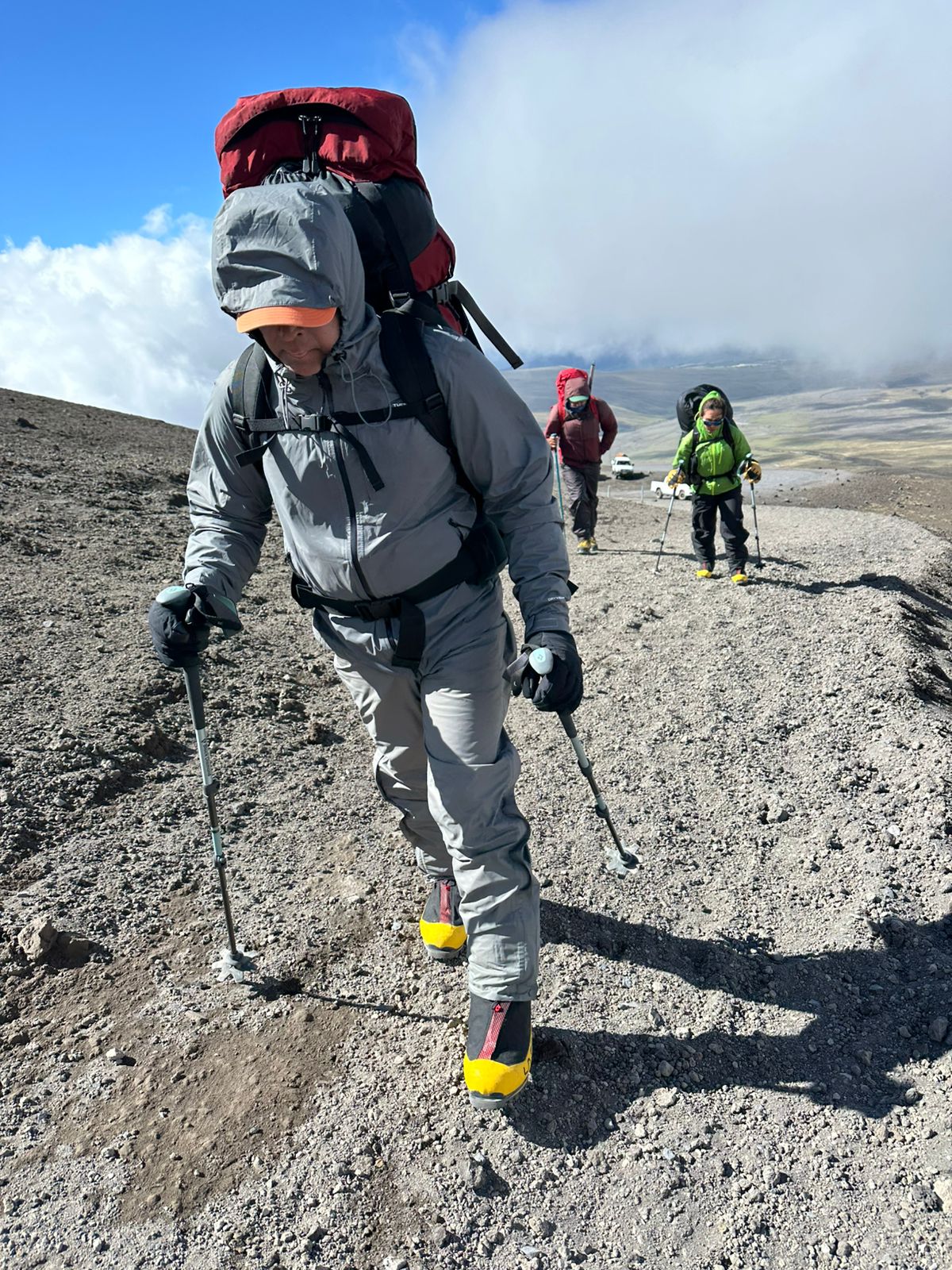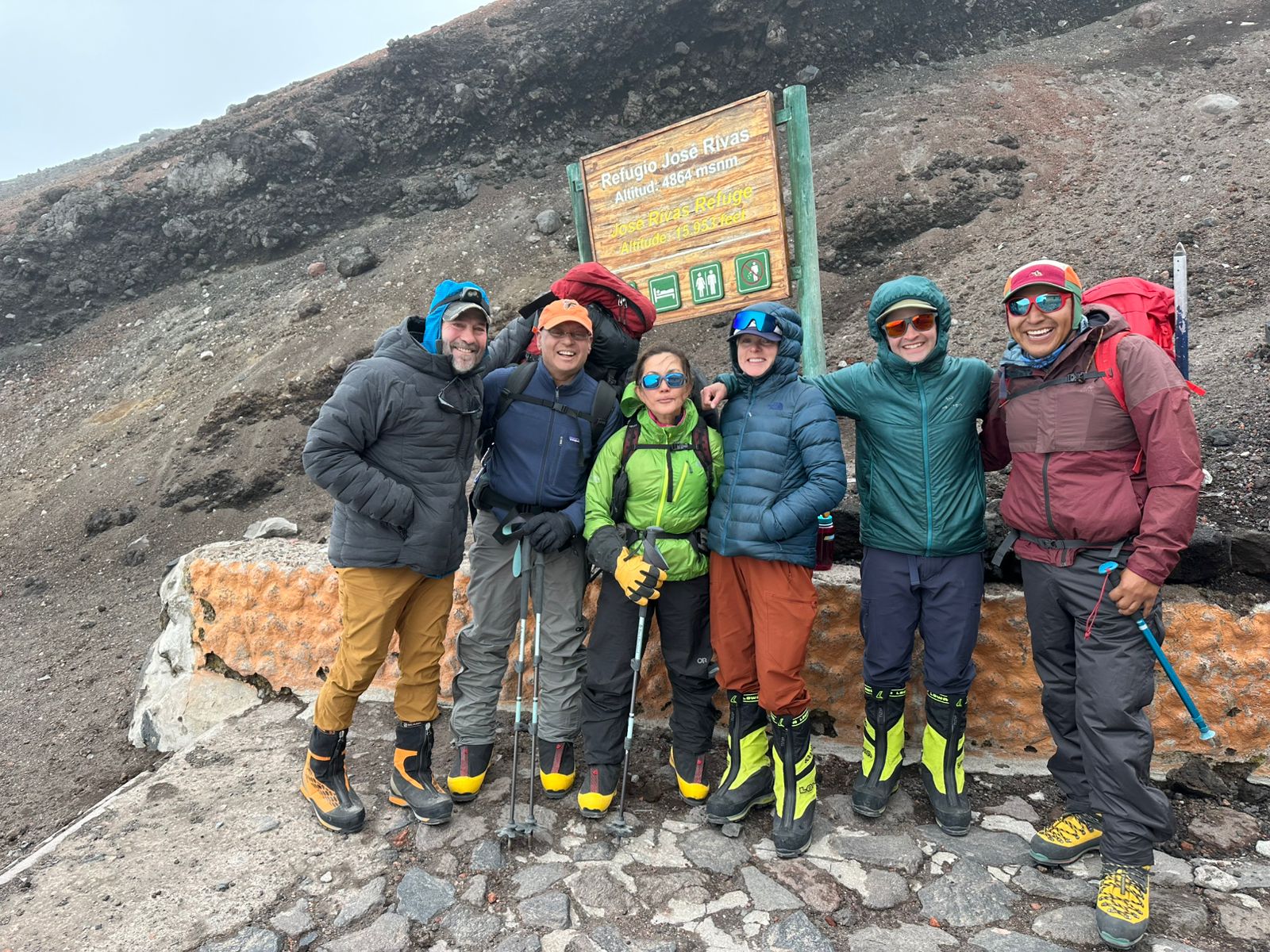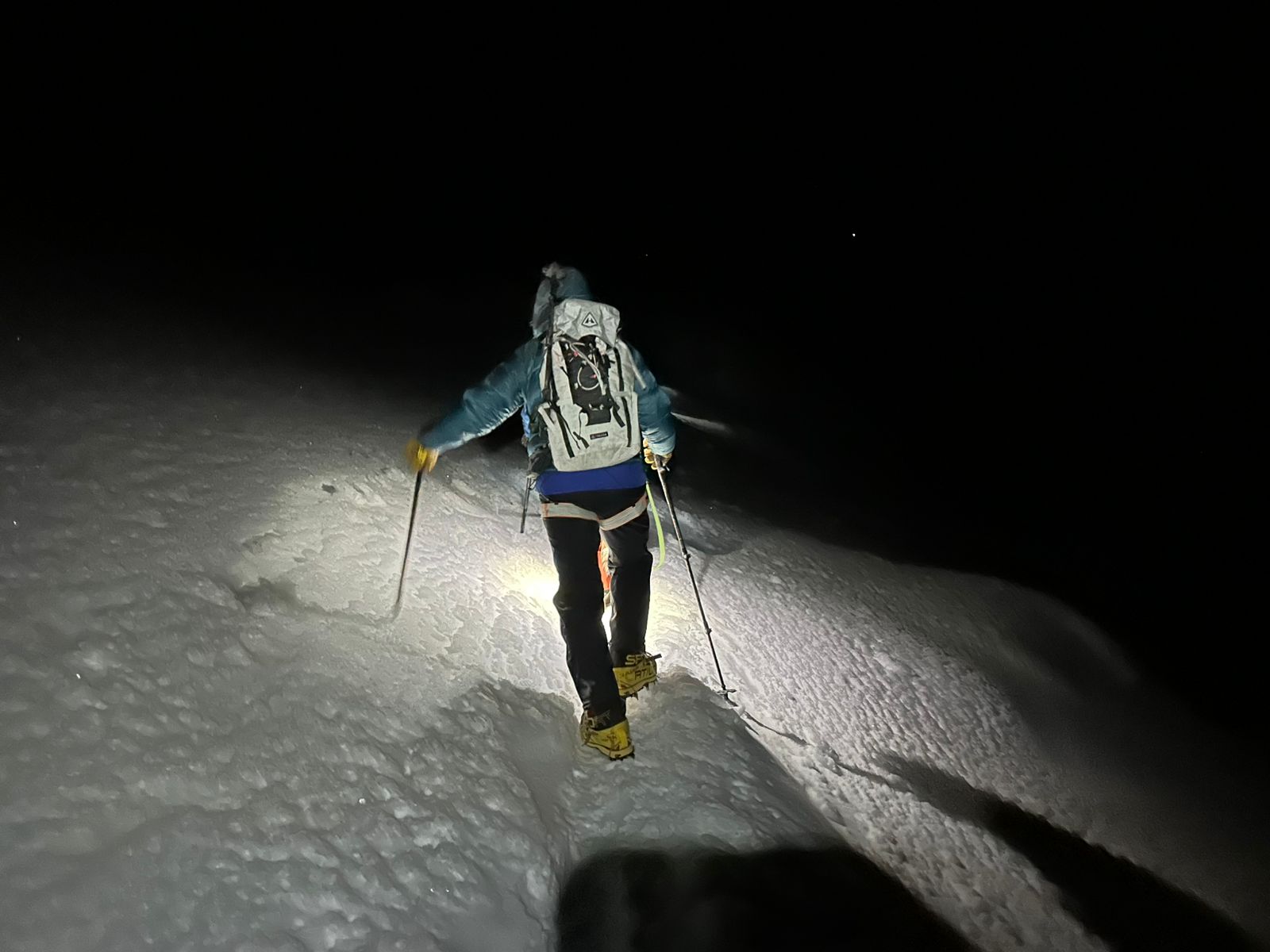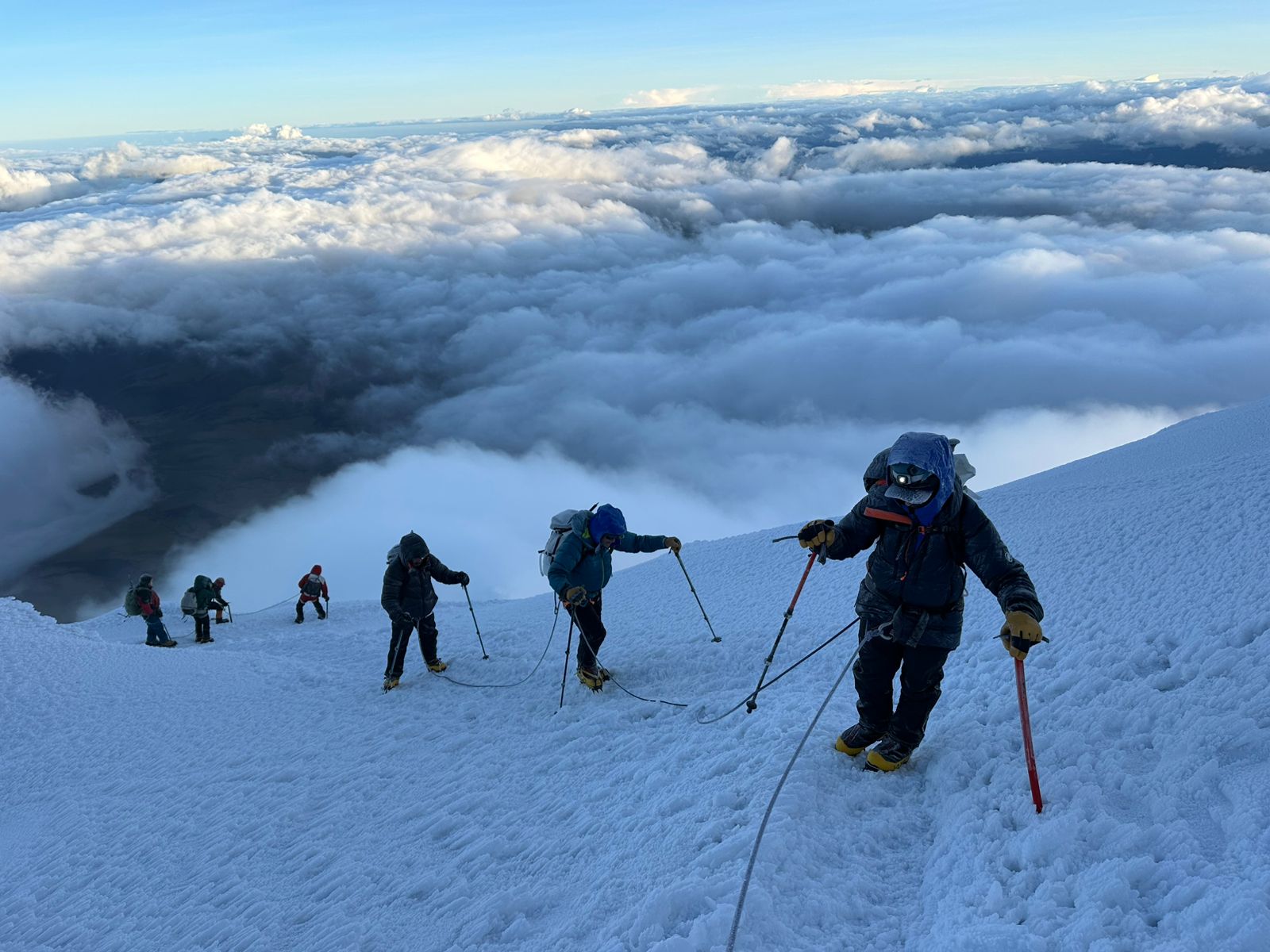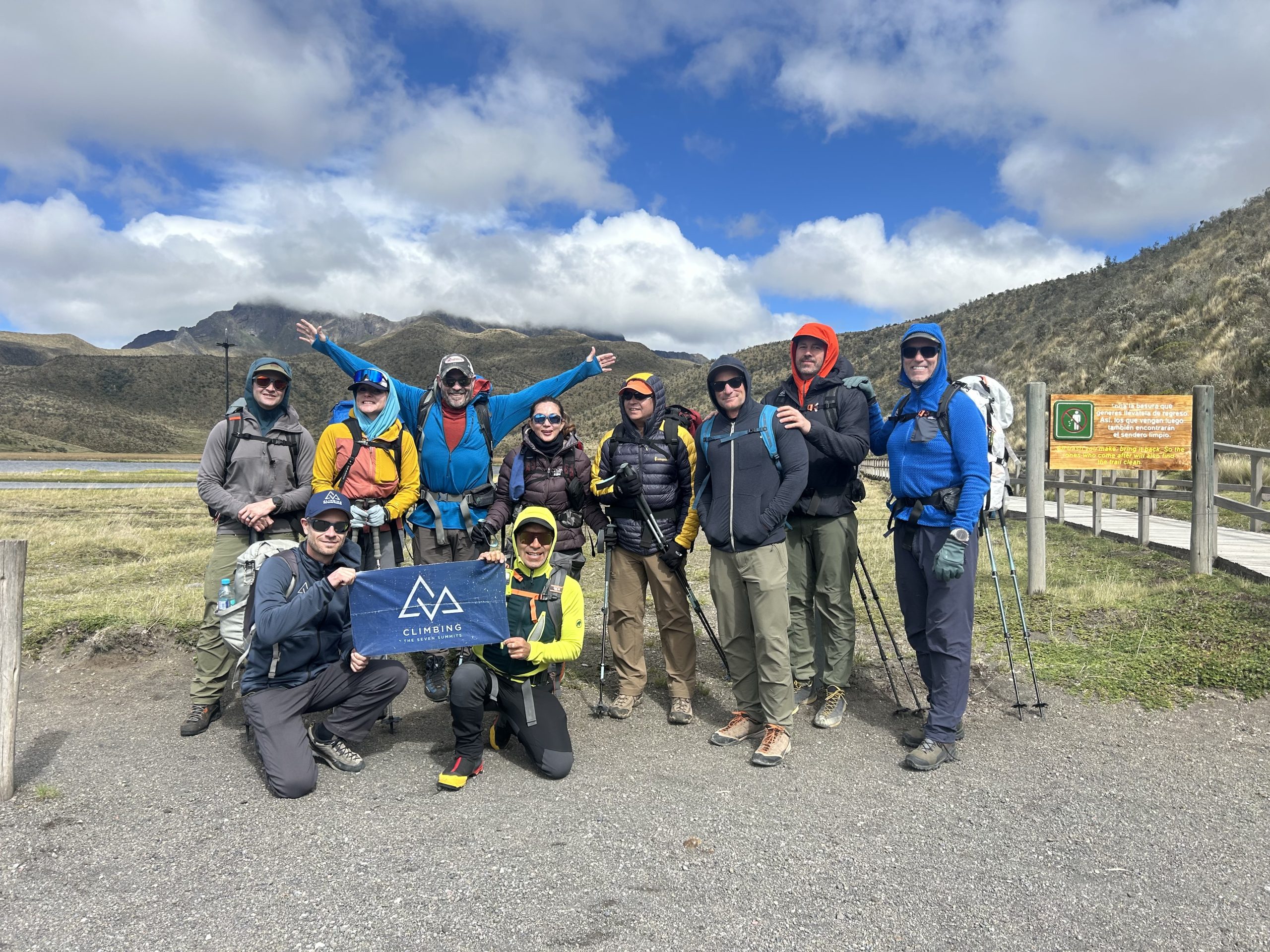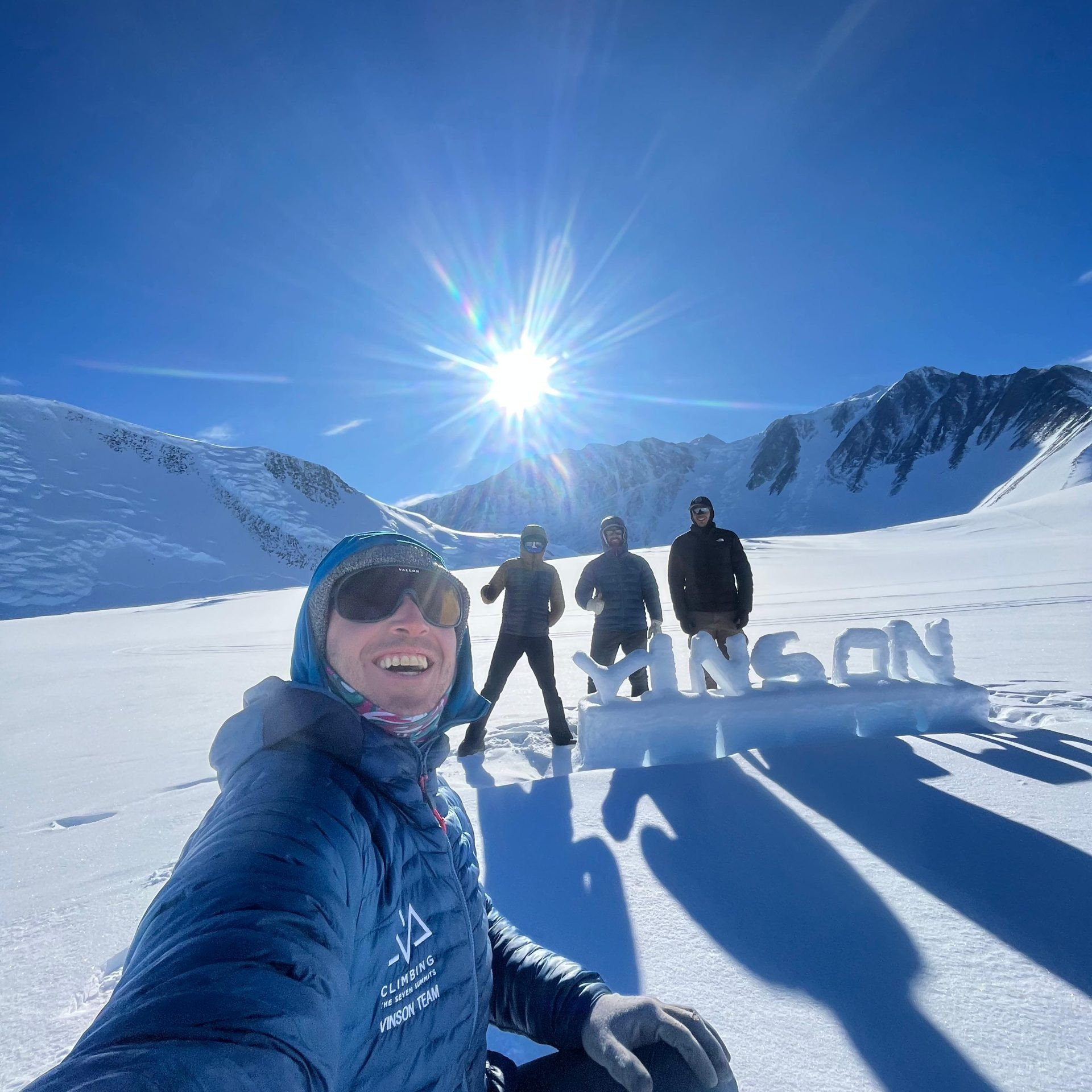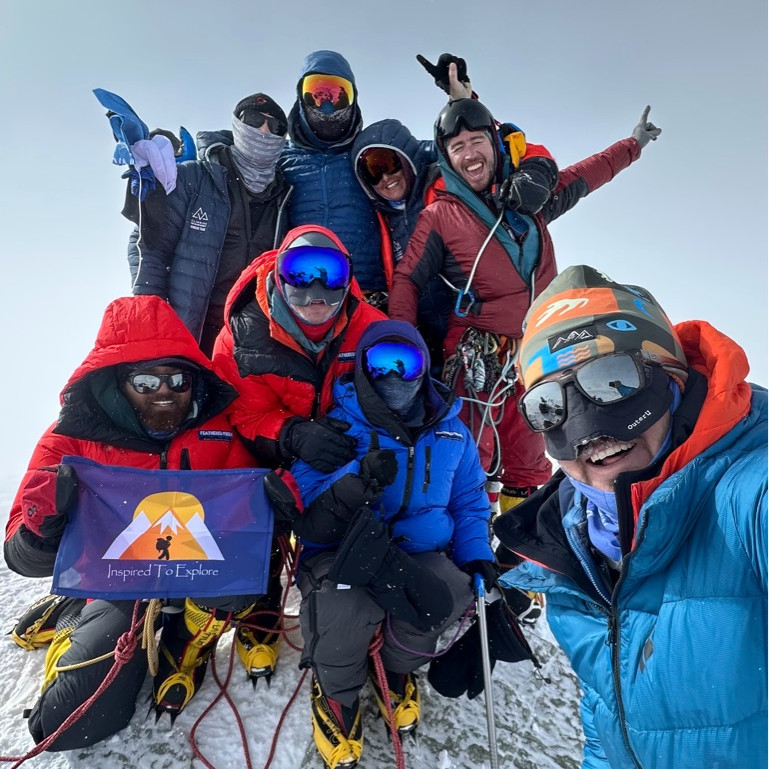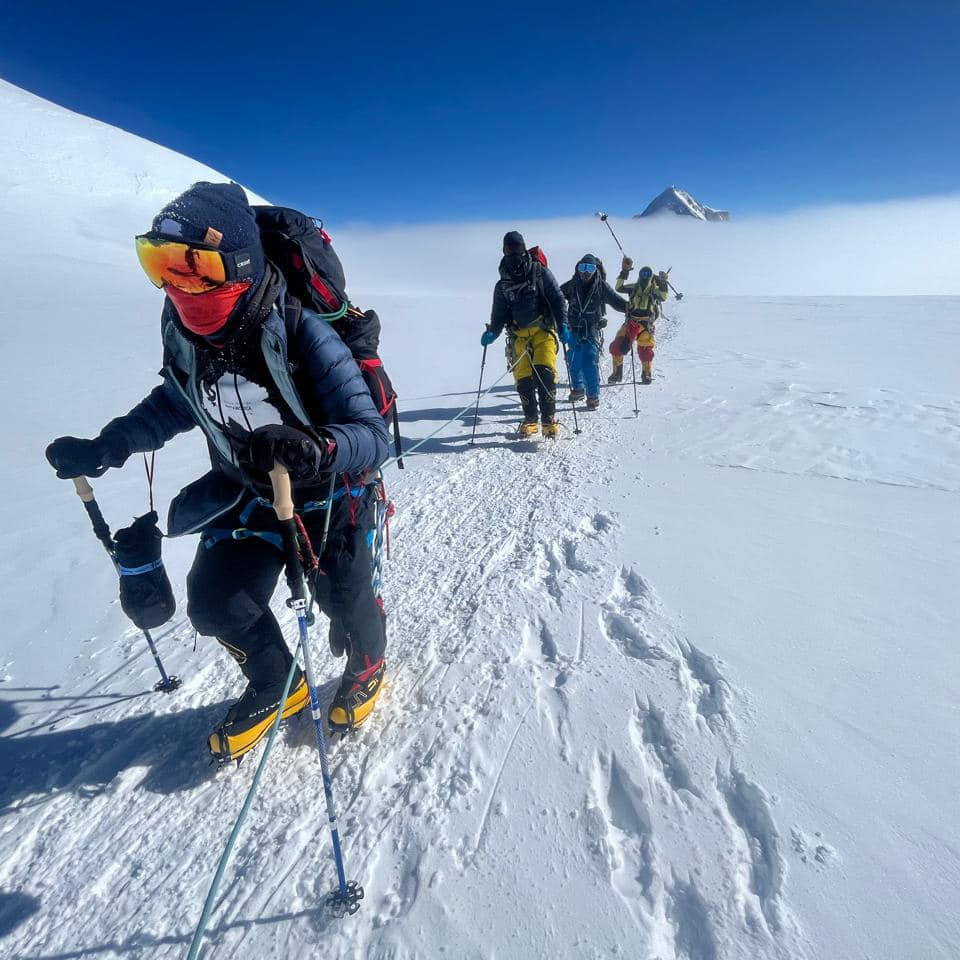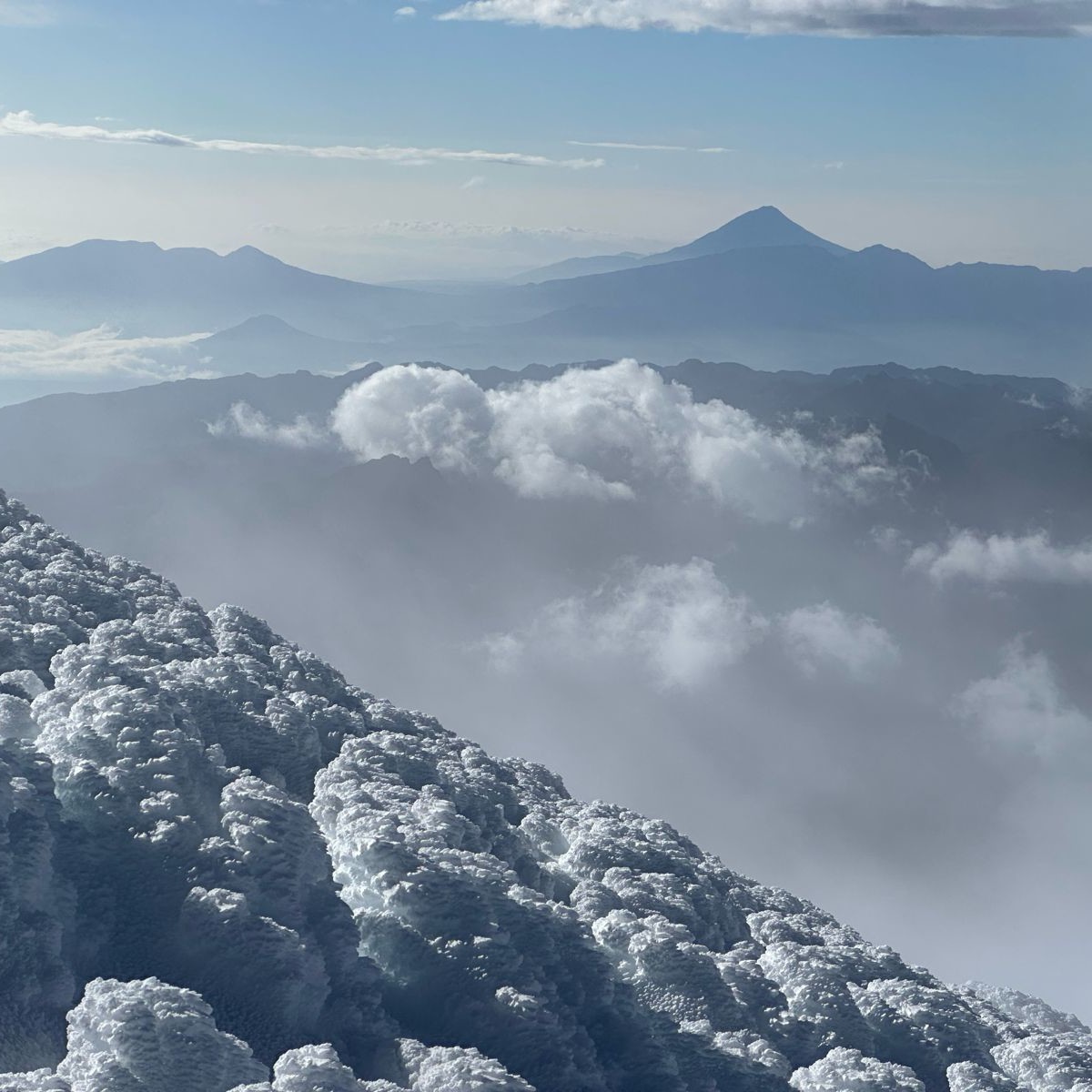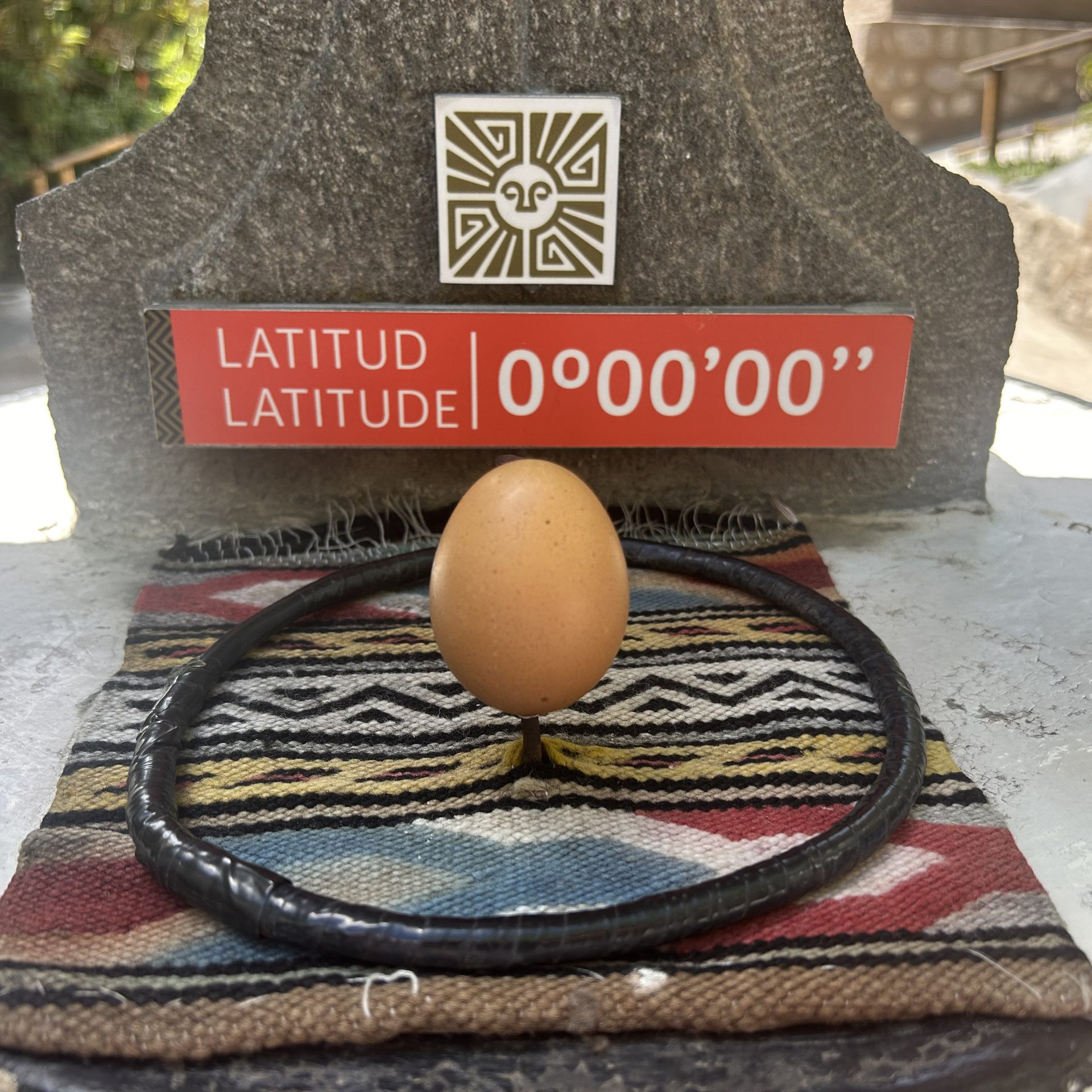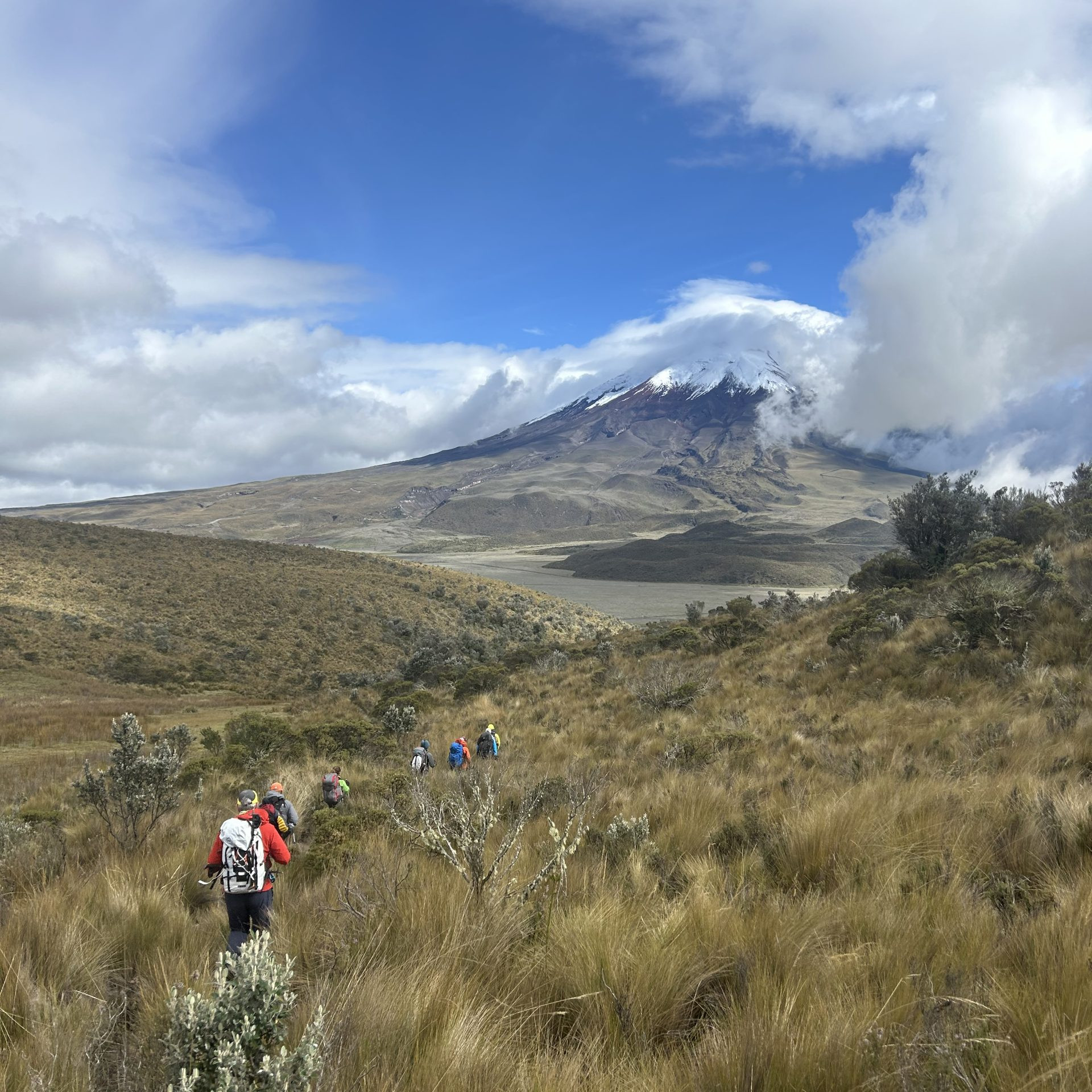More Summits on Aconcagua for our Team Climbers!
Our Aconcagua team summited today under sunny weather! A massive congratulations to the entire team.
The following climbers stood on top:
- Heather H.
- Cal H.
- Juan O.
- Jody B.
- Brandon H.
- CTSS Guide Lucas D.
The team is back at Plaza de Mulas, recovering and celebrating before they trek out tomorrow.
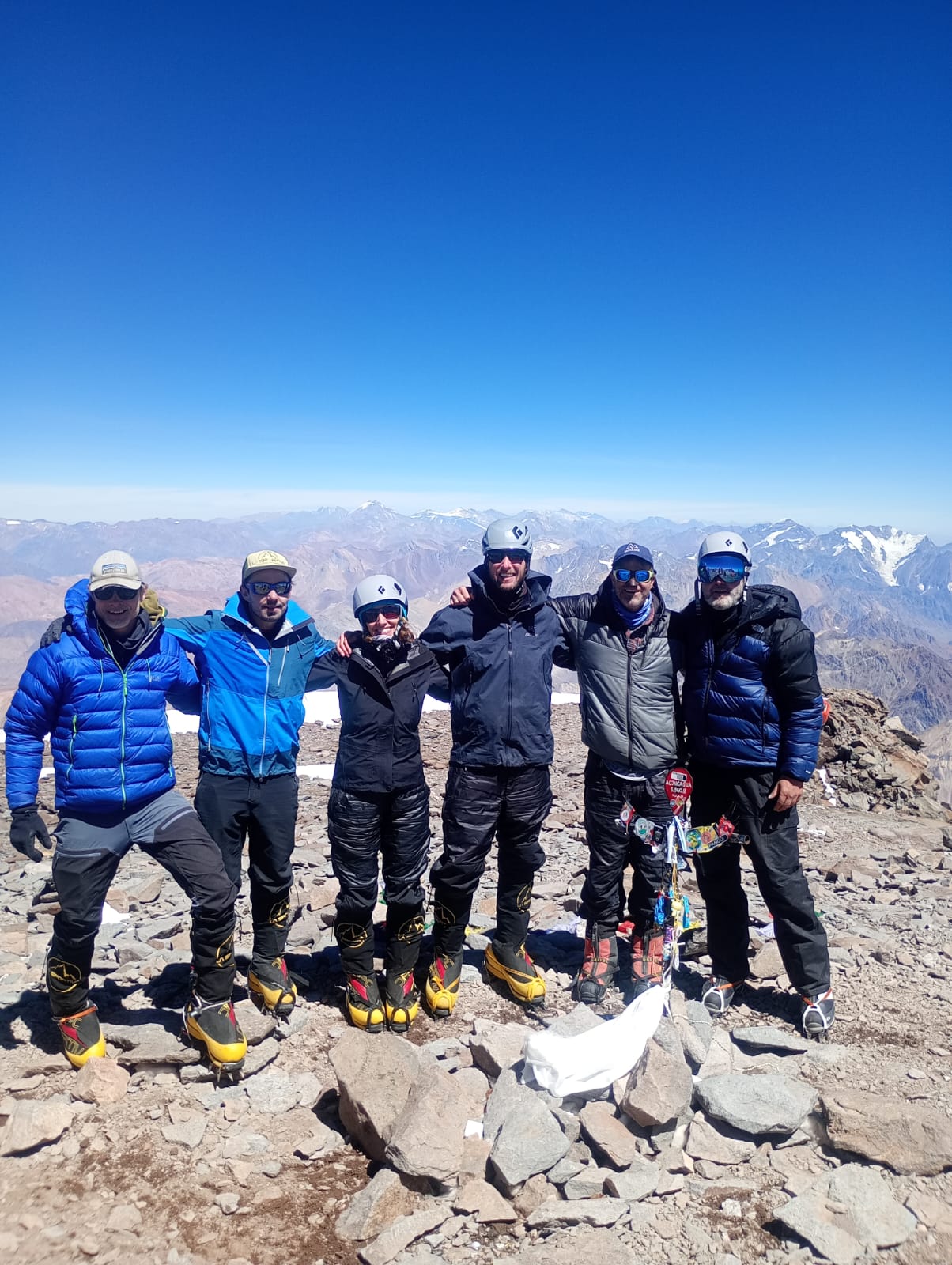
Kilimanjaro & Ethical Trekking: Why Porter Welfare Matters
Kilimanjaro & Ethical Trekking: Why Porter Welfare Matters
Kilimanjaro isn’t just another peak—it’s often the gateway to high-altitude climbing and, for many, the first step in tackling the Seven Summits. The experience you have on this mountain shapes the foundation of your mountaineering career, making ethics a crucial piece of the puzzle to consider. With nearly 300 Kilimanjaro operators to choose from, it’s essential for climbers to be aware of the realities of the tourism industry on the mountain.
Every expedition is only as strong as its team, and no one plays a more vital role on Kilimanjaro than the porters. They haul the gear, set up camp, prepare meals, and ensure climbers have the best possible chance of success. Yet, approximately 70% of operators on Kilimanjaro DO NOT meet ethical standards, meaning hardworking porters are often exploited and mistreated, receiving little to no wages, tips, food, or proper sleeping conditions.
This is where the Kilimanjaro Responsible Trekking Organization (KRTO), formerly known as the Kilimanjaro Porters Assistance Project (KPAP), steps in—setting the gold standard for fair porter treatment and implementing accountability for climbing companies.
As a certified KRTO partner, Climbing the Seven Summits (CTSS) is proud to be among the companies prioritizing ethical trekking. We believe that climbing in good style isn’t just about reaching the summit—it’s about how you get there and ensuring that every member of the team is treated with dignity and respect.
Why Porters Matter
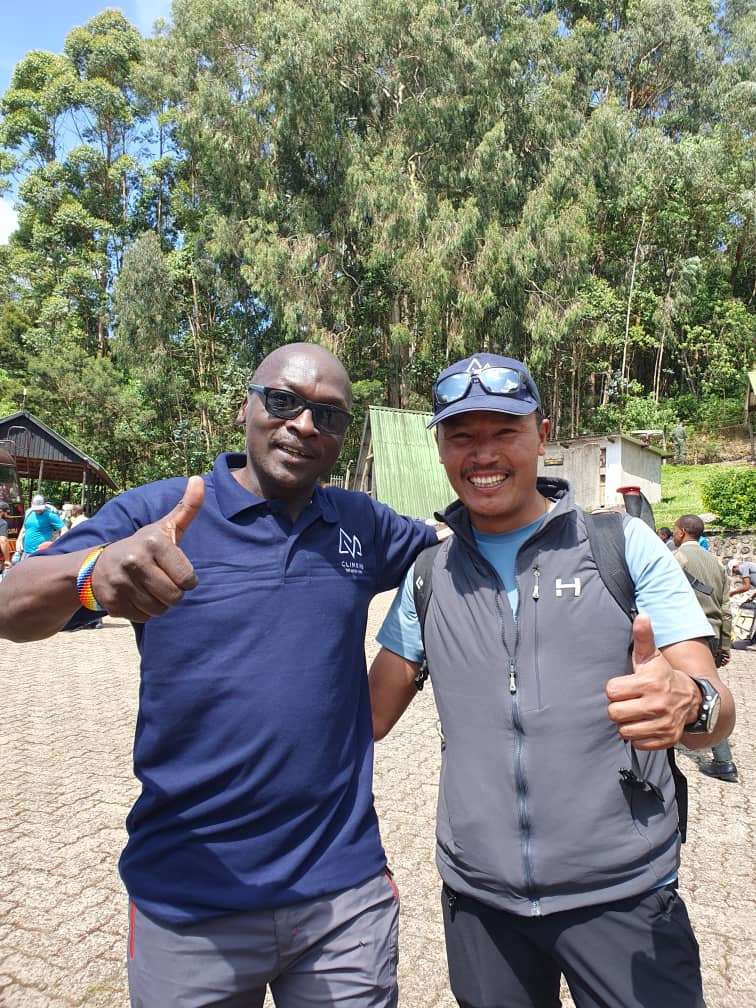
Porters are the backbone of all Kilimanjaro expeditions, making summit attempts possible for thousands of climbers each year. If you’ve climbed other high-altitude peaks, think of Kilimanjaro’s porters as the equivalent of Everest’s ice doctors or even the muleteers on Aconcagua. Their work goes beyond carrying loads—they create an environment that enables success.
Porters carry essential equipment, including tents, sleeping bags, food, and personal gear, allowing climbers to ascend with only a daypack. They also set up and dismantle camp, prepare meals, fetch and purify water, and provide encouragement and motivation along the way through their traditional songs and stories.
For an expedition to be KRTO-approved, porters must not carry more than 44 lbs (20kg) and must have access to proper gear, food, and sleeping conditions. Unfortunately, many non-approved operators ignore these regulations, forcing porters to endure harsh conditions for minimal pay. If you come across a price point that is too good to be true, it probably is. discount operators often keep their prices low at the expense of their porters.
KRTO: The Gold Standard for Porter Welfare
KRTO stands as a beacon of sustainable tourism and social responsibility on the Roof of Africa. Originally founded in 2003 by the International Mountain Explorers Connection (IMEC), the organization was created to address poor working conditions on Kilimanjaro. Their mission is to ensure responsible trekking by advocating for fair treatment of porters, educating the public on porter welfare, and implementing accountability measures for climbing companies. Their focus includes:
- Free clothing lending programs to ensure porters have proper gear
- Education and empowerment through free English, First Aid, HIV/AIDS awareness, money management, and porter rights classes
- Public awareness and advocacy for proper porter treatment
KRTO continuously monitors its partner companies through:
- Porter questionnaires and interviews to gather direct feedback
- Examination of salary distribution methods to ensure fair wages are paid
- Review of tipping procedures for transparency
- Audit and reporting by investigative porters who document working conditions on expeditions
“The working conditions for porters changed when KRTO came on the scene. There’s a big difference between KRTO and non-KRTO-approved companies. I no longer have to pay bribes to get work, and I receive the salary I deserve.”
– Michael, Kilimanjaro Porter
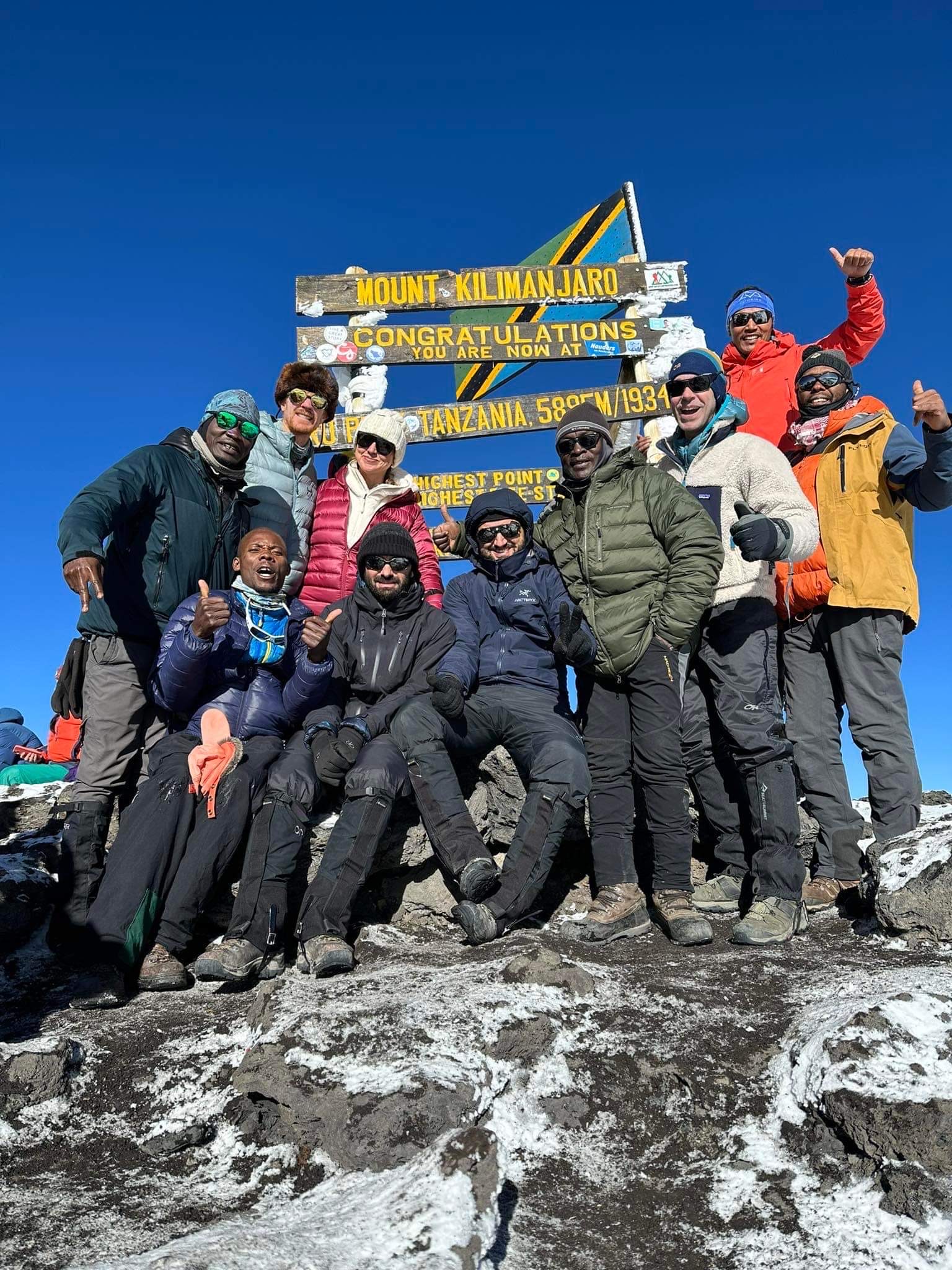
Since its inception, KRTO has significantly improved the lives of Kilimanjaro porters by ensuring better working conditions, fair treatment, and increased opportunities. Porters on 37,478 expeditions have borrowed KRTO’s mountain climbing gear free of charge, ensuring they have access to the necessary clothing and equipment. Each year, more than 7,000 porters benefit from fair wages and ethical employment standards, while more than 16,000 porters and guides have participated in free education programs.
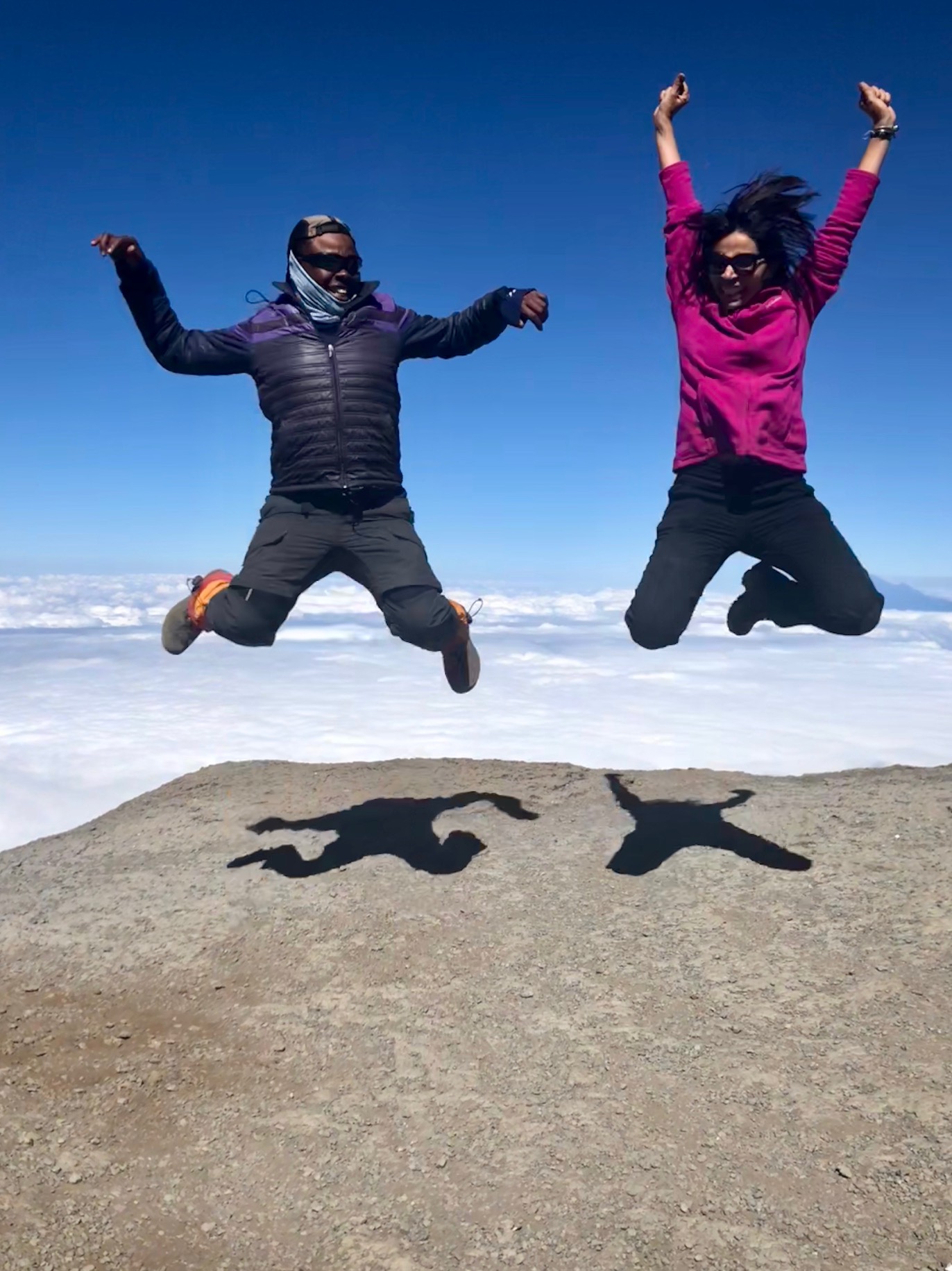
KRTO also focuses on labor rights, with 5,000+ porters trained to understand and advocate for their rights in the workplace. Environmental responsibility is another priority, with more than 1,100 porters certified in Leave No Trace (LNT) principles, ensuring Kilimanjaro remains pristine for future generations. Additionally, 1,300+ guides and porters have received first aid certification, enhancing safety for both staff and climbers.
The positive impact of KRTO often extends into the broader lives of porters off the mountain, empowering them to support their families, invest in education, and create additional sources of income during the off-season.
“There is a big difference between now and [before joining] KRTO. I have benefitted a lot and have made huge steps in life. My children are in school, I rent a farm for agriculture, and I also keep 3 goats and 2 sheep, all from my mountain wages. I have diversified my income sources when not working on the mountain. I sell shoes and clothes and do food vending, depending on the seasons and opportunity. May God bless KRTO because they have helped us a lot.”
– Anna, Kilimanjaro Porter
CTSS & KRTO: The Future of Ethical Adventure Travel
At CTSS, ethical trekking isn’t an add-on—it’s the foundation of how we operate. Our partnership with KRTO ensures that every porter on our Kilimanjaro expeditions is treated fairly, with respect and dignity.
At CTSS, we pay a minimum wage of 20,000 Tanzanian shillings per day, with all wages paid within two days of trip completion. Porters receive three full meals per day, high-quality tents for shelter, and no individual carries more than 20kg (44 lbs). Each climber is supported by at least three porters, reducing physical strain and improving the overall trekking experience. Our compliance with KRTO standards is independently monitored, ensuring transparency and accountability.
But our commitment doesn’t stop at Kilimanjaro. Across all our expeditions, from Everest to Vinson, we champion ethical and sustainable adventure travel—investing in local communities, following strict environmental standards, and advocating for fair treatment of guides, porters, and staff worldwide. A percentage of every expedition fee goes directly to the Tiger of the Snows Fund, which, in turn, provides scholarships, training, and other initiatives that improve the well-being of those who dedicate their lives to the mountains. Over the last five years, this non-profit has funded the education of three Chagga students whose parents are porters on Kilimanjaro.
Whether through our partnership with KRTO, contributions to the Tiger of the Snows Fund, or our adherence to Leave No Trace principles, CTSS is setting the standard for responsible climbing. And for us, the true measure of success isn’t just reaching the summit—it’s the impact we leave behind. When you climb with CTSS, you’re not just standing on top of a mountain—you’re standing for something bigger.
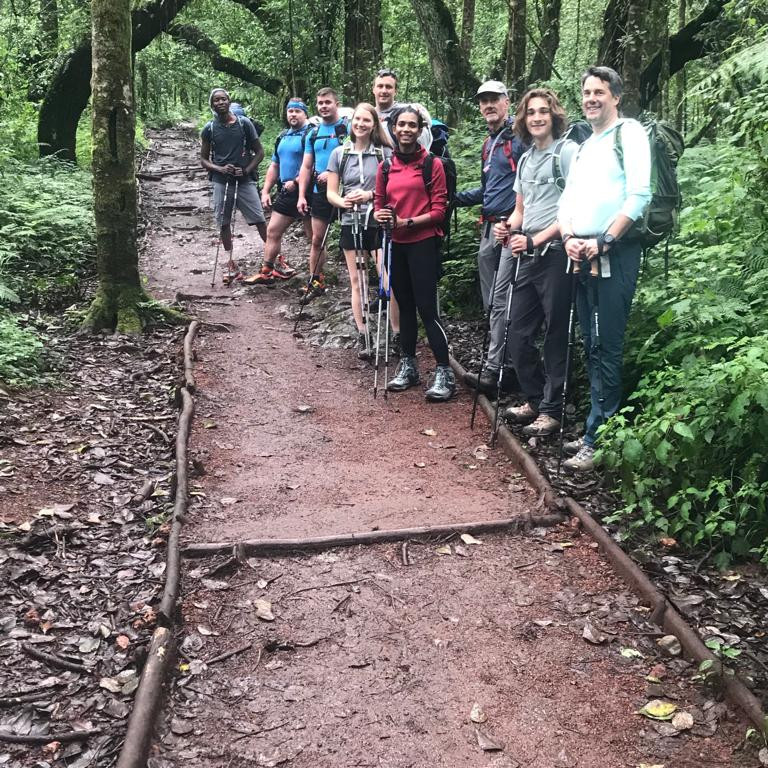
If you’d like to directly support KRTO and the mountain crews that work on Kilimanjaro, you can donate directly or participate in their initiative called Bring Some More to Kilimanjaro. In short, you can donate your gently used trekking gear, clothing, and footwear to support their gear lending program. Due to the expensive mailing costs and import taxes in Tanzania, it is best to have the gear carried by individuals who are traveling to Tanzania. Reach out to KRTO if you’d like to do this so they can advise you on customs procedures.

Camp Two on Aconcagua
Our Ecuador team wrapped their adventure with a final celebratory dinner before bidding farewell and heading home. A huge thank you to everyone for making this an unforgettable trip!
Meanwhile, on Aconcagua, our team climb is off to a great start with a successful trek into base camp at Plaza Argentina. Followed by load carriers and moves to Camp 1 and Camp 2. Everyone is feeling strong, and we are excited to continue sharing updates on their progress. Here are a few shots from CTSS guide Lucas:
Our private climbers on Aconcagua are also making great progress! The team has reached Camp 2 and is taking a well-earned rest day while keeping a close eye on the forecast as they prepare for their summit bid. Here are a few photos from CTSS guide Andres:
News from South America
Our Ecuador team had a great time on Chimborazo with excellent weather. This morning Toni, Marc and Daniel stood on top with guide Luke and Edgar, congratulation's team! They are back safe at high camp and starting to head back to Quito for a celebration dinner, before heading home.
Meanwhile on Aconcagua, our private team of Terry S & Guide Andres made the trek into base camp and are having a great time! They are starting to carry loads up to Camp 1 and feeling good!
Our Aconcagua team climb have started their trek into base camp and are moving well. One of our Guides Max sent over these photos of the first day of the trek in. Today our speed ascent climbers arrive in Mendoza where they will gear check, finalize their permits, and get ready to helicopter into base camp tomorrow to meet the rest of the team!

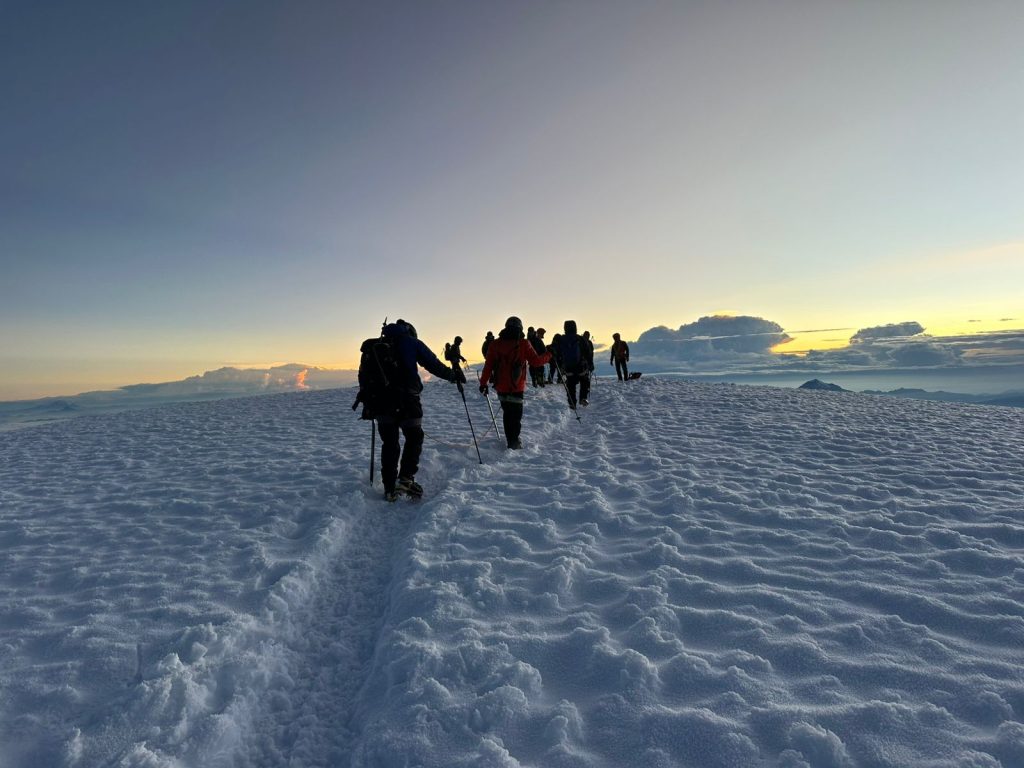


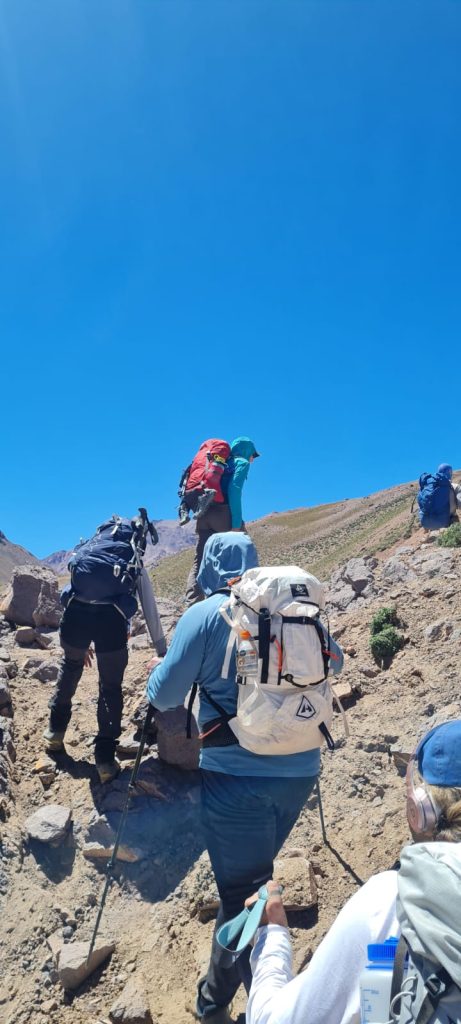
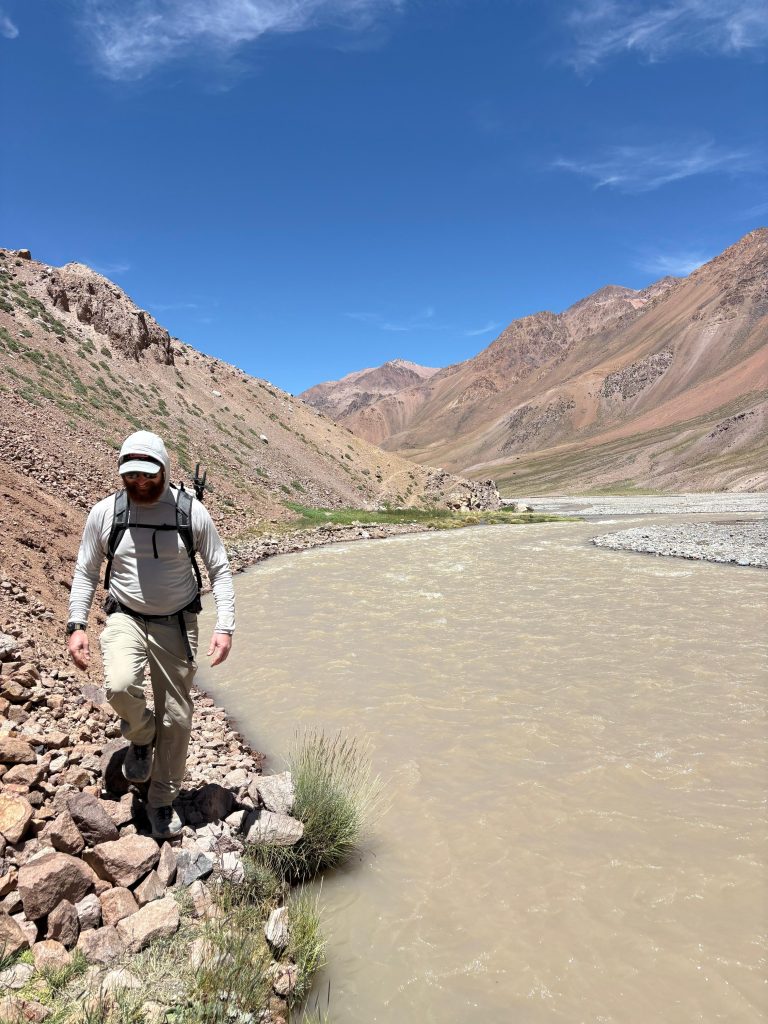
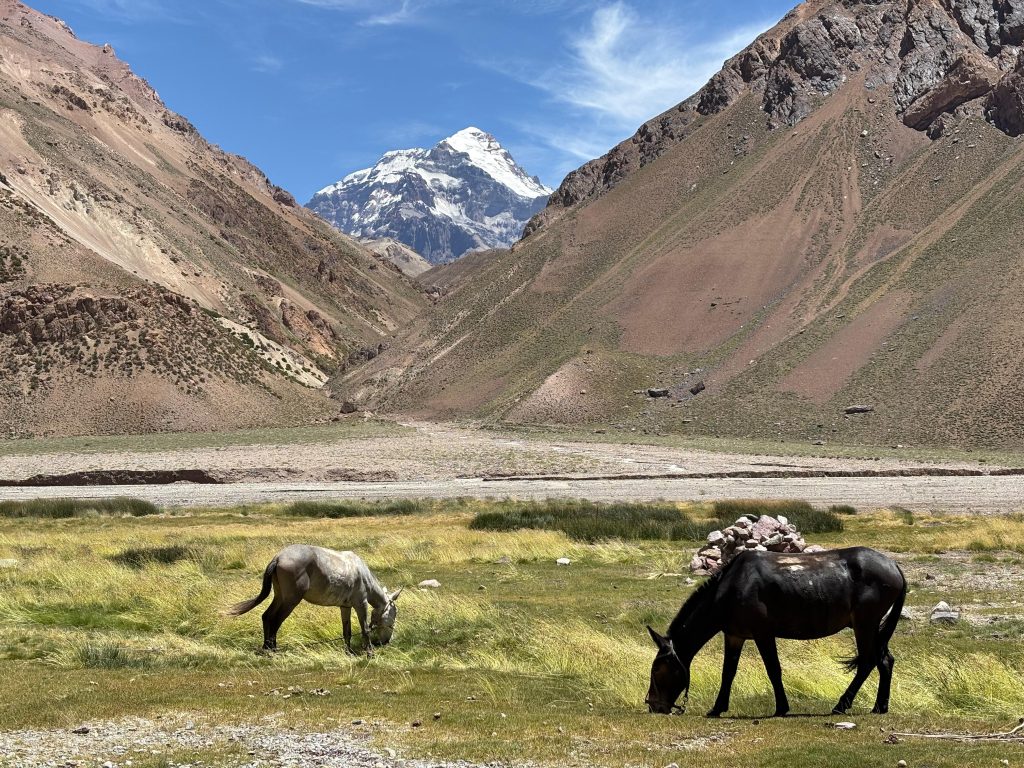
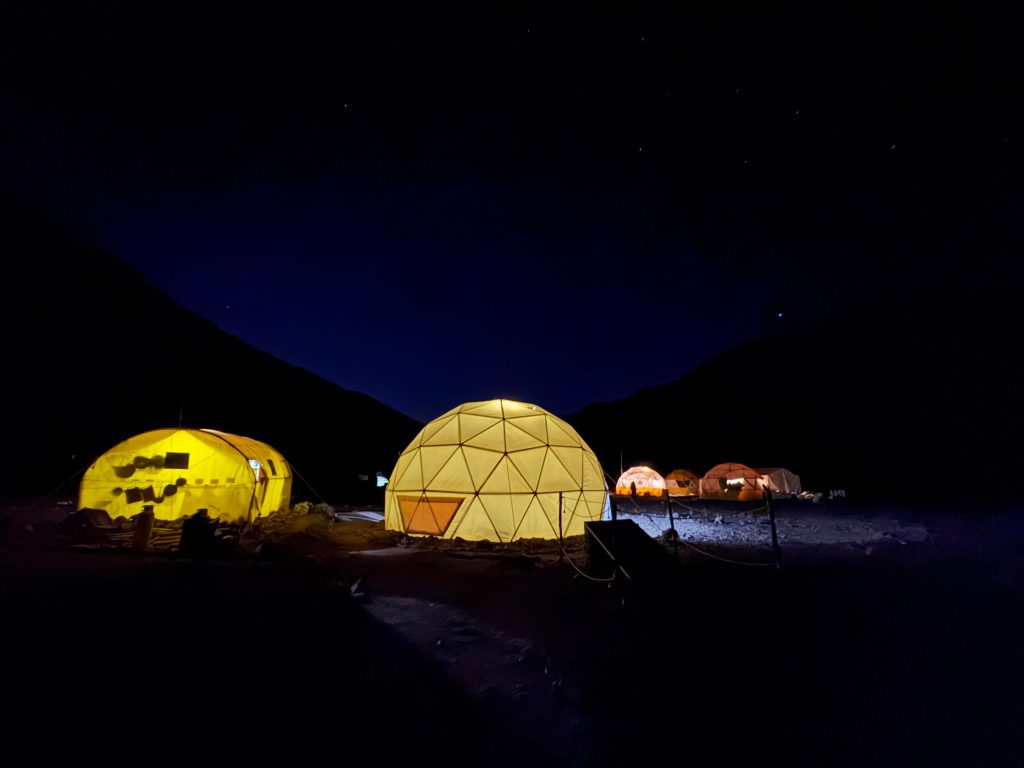

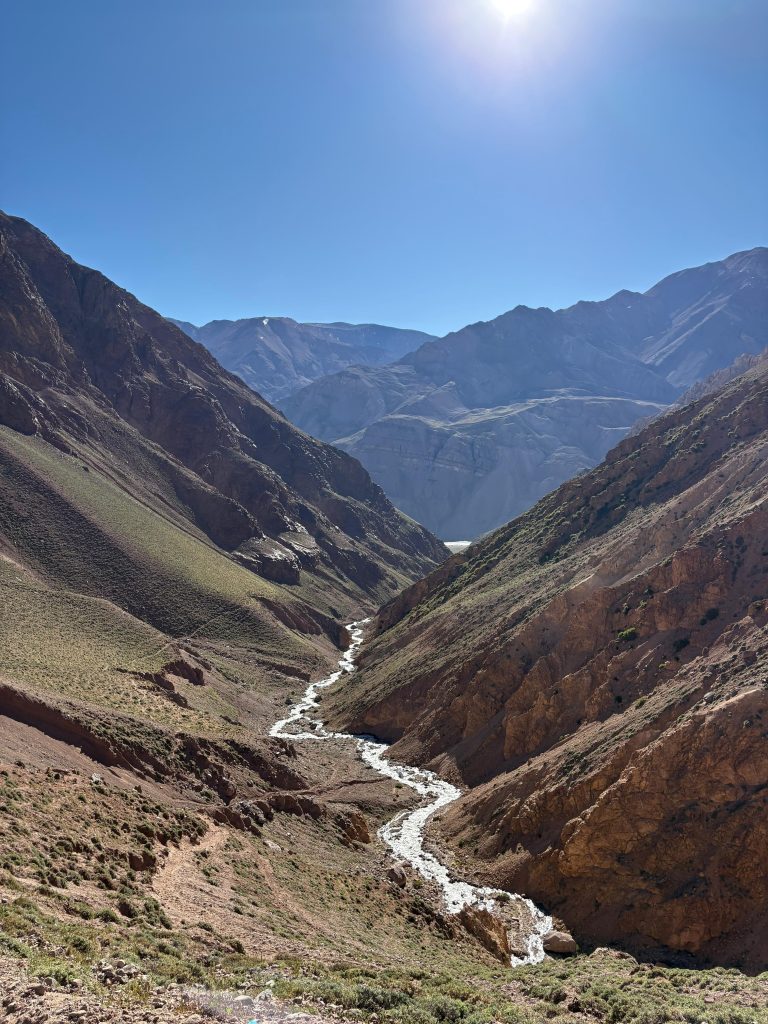
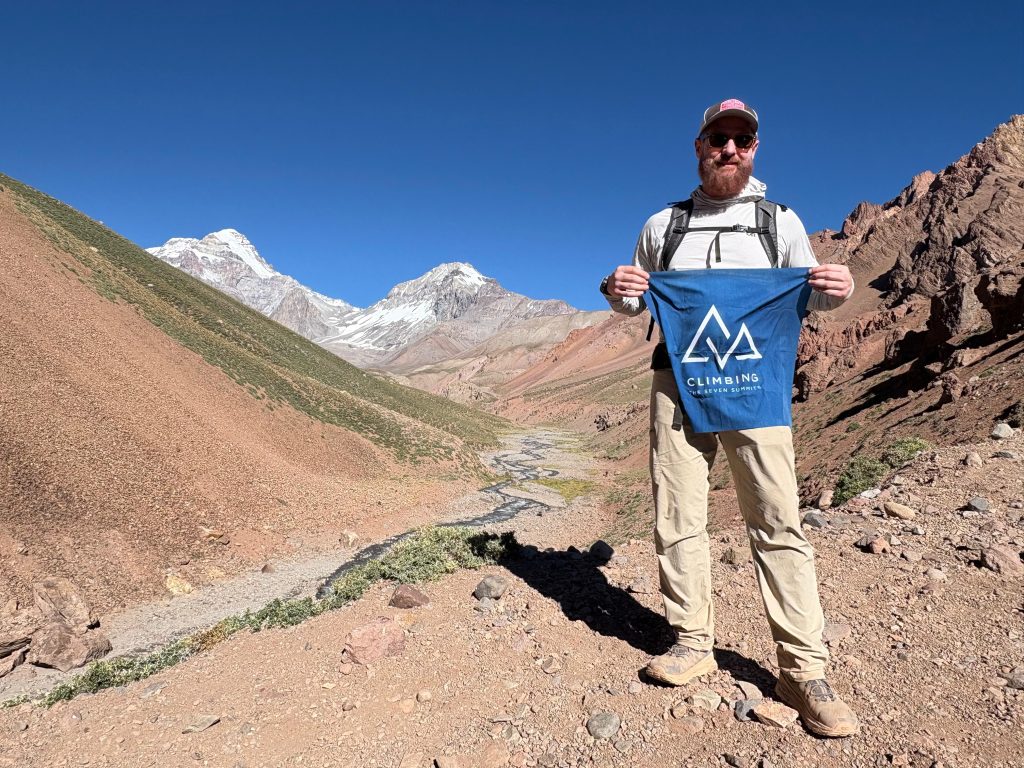
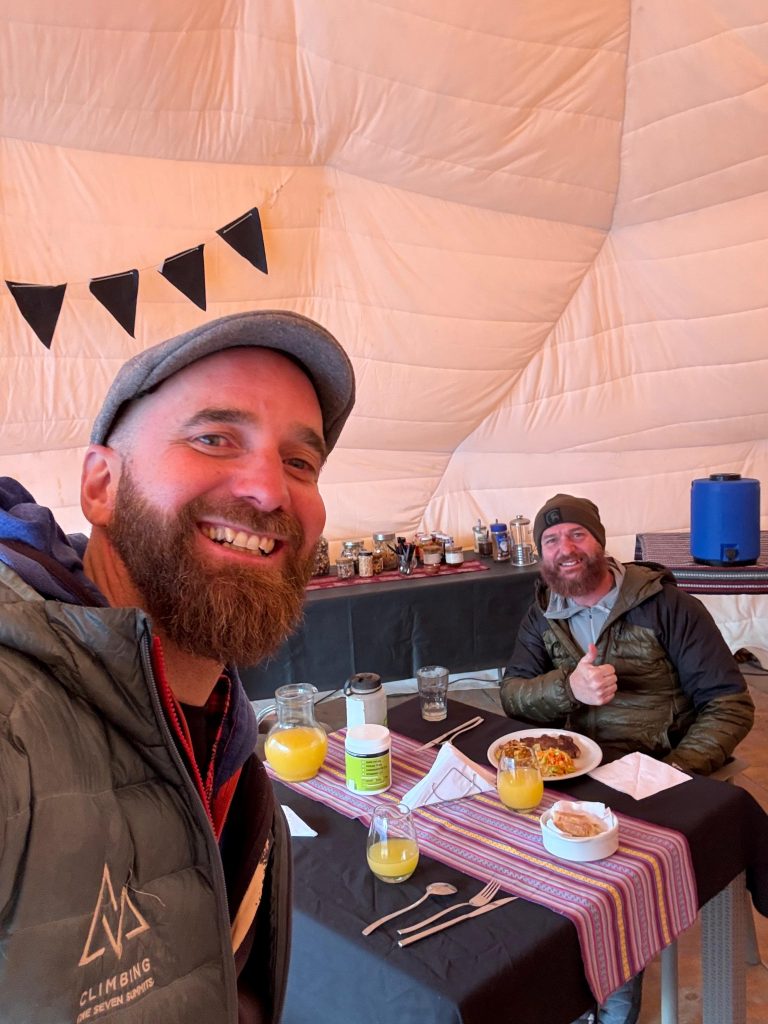
Success on Cayambe for CTSS
Our Ecuador Volcanoes team has been busy! Over the weekend, the team made their way to Cayambe (18,996 feet) for their second summit bid. With expert guide leadership, high spirits post-Cotopaxi, and excellent weather following the team, the summit window for Cayambe arrived, and the team made their successful summit.
Congratulations to the following team members for summiting:
- Chelsey M.
- Marc M.
- Toni B.
- Chad J.
- Daniel B.
- Kyle R.
- Rajesh P.
- Mavic R.
- Guide Edgar P.
- Guide Luke R.
Cayambe is the only major mountain in the world whose summit straddles the Equator, and it stands proudly as Ecuador’s third tallest peak.
The team is now headed to Thermas de Papallacta to soak in the hot springs and celebrate their success before some of the team continues onto Chimborazo (20,548 feet), our add-on climb available for this expedition.
Chimborazo, or Chimbo, is Ecuador’s tallest peak, and given its position on the planet’s equatorial bulge, it’s also the farthest point from the center of the Earth! We highly recommend climbing Chimbo as it’s a great way to make the most of your acclimatization, training, investment, and time in Ecuador.
Photos from CTSS Guide Edgar P. and Luke R.
Final Teams on Aconcagua
Climbing season is well underway in Aconcagua, and our private team kicked off their expedition with a gear check and dinner in Mendoza, Argentina, before starting their journey to Plaza Argentina (base camp during their ascent) over the weekend.
On the heels of our private team, our final team climb has successfully landed and convened in Mendoza. Shortly after arriving, the team completed their gear checks, got their climbing permits, and traveled to Puente del Inca to start their trek. Tomorrow, the team will head to Plaza Argentina, which will also serve as the team’s base camp during the ascent.
Check-ins with our guides indicate that the entire team is psyched to start their climb of Aconcagua via the 360 Route (also called the False Polish Traverse).
Photo from CTSS Guide Andres G. (Private Climb)
Photos from CTSS Client Anirudh K. (Team Climb)
Cotopaxi Summits for Ecuador Volcanoes Team
Our Ecuador team spent yesterday practicing skills on Cotopaxi and preparing for a summit attempt. Today, the team got an alpine start and put their skills to use during their successful summit bid on Cotopaxi (19,347 feet)!
Congratulations to the following climbers who stood on top:
-
Chelsey M.
-
Marc M.
-
Toni B.
-
Chad J.
-
Kevin S.
-
Daniel B.
-
Kyle R.
- Guide Edgar P.
- Guide Luke R.
Cotopaxi is one of the world’s highest active volcanoes and Ecuador’s second-highest summit. Since 1738, this perfectly symmetrical cone volcano has erupted more than 50 times, most recently in 2022. The recent flurry of activity also meant that Cotopaxi was closed for more than a year, but early last year, the peak stabilized and reopened for climbing.
Next for the team will be a summit attempt on Cayambe (18,996 feet).
Photos from CTSS Guide Edgar P.
That's a Wrap for our Vinson Season!
Good news from Antarctica: Our team got confirmation that they will fly off the ice today, back to Punta Arenas, Chile, and start their journey home! That’s officially a wrap on a fantastic season on Vinson for us, with 100% summit success for all of our climbers!
Here are a few shots from our 2024/2025 season:
Meanwhile, in Ecuador, the team spent time exploring Quito a bit with a trip up the Teleferiqo and a short acclimatization hike. This was followed by a trip to the equator, where they balanced some eggs on the head of a nail and watched water swirl in opposite directions in a toilet bowl.
Yesterday, the entire group climbed to the summit of Rumiñahui to acclimatize; despite some rainy weather, they had a great time!
Today, they are doing skills training on the lower slopes of Cotopaxi to prepare for their upcoming climb!
